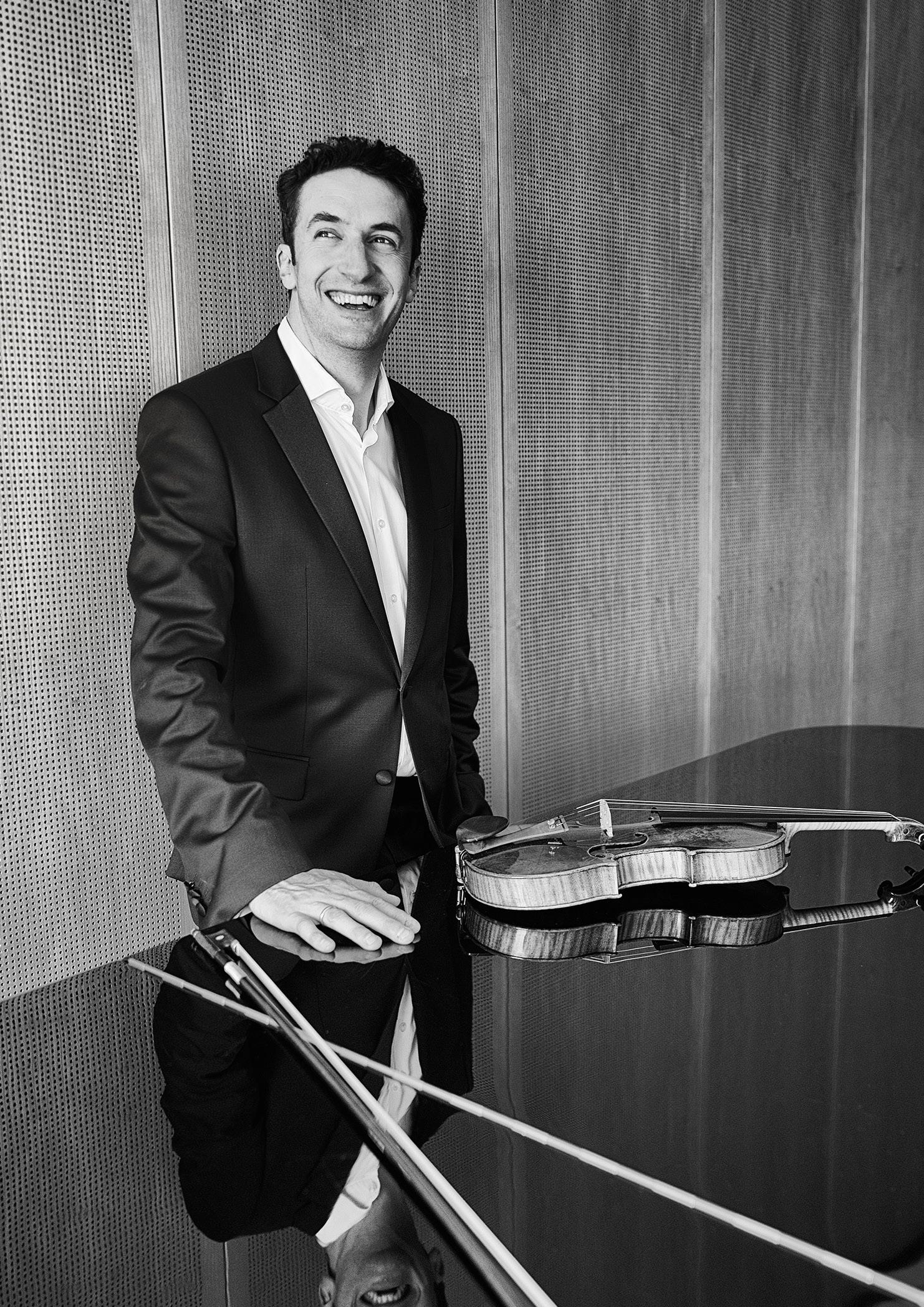


























We are pleased to welcome Erica Bondarev Rapach as the permanent Executive Director of the Annapolis Symphony Orchestra (ASO). In collaboration with our Artistic Director, Maestro José-Luis Novo, Erica will position the ASO for new growth and relevance in our community and beyond. When you meet Erica, you’ll see she has the energy, smarts, and skills necessary to help propel our continued growth and sustainability. She’s excited to use her talents for the ASO.
It’s easy to revel in the artistry of our professional musicians without fully understanding the behind-thescenes work that makes the magic happen. Imagine what it takes to get 70 contract musicians in the same place at the same time, reading off the same sheet of music. Our musicians arrive to performances prepared like the pros they are, but this is just the beginning of what it takes to bring music to our ears. The Artistic Operations team has scheduled the space, rented instruments, organized the sheet music, and planned rehearsals. To be here today, you engaged with our Box Office for a subscription or ticket. You know about the concert because of our Marketing staff. Our Development staff works closely with donors whose contributions keep our musicians on stage, and our grant writer finds, writes, and reports on every grant opportunity. And we haven’t even touched on the Annapolis Symphony Academy!
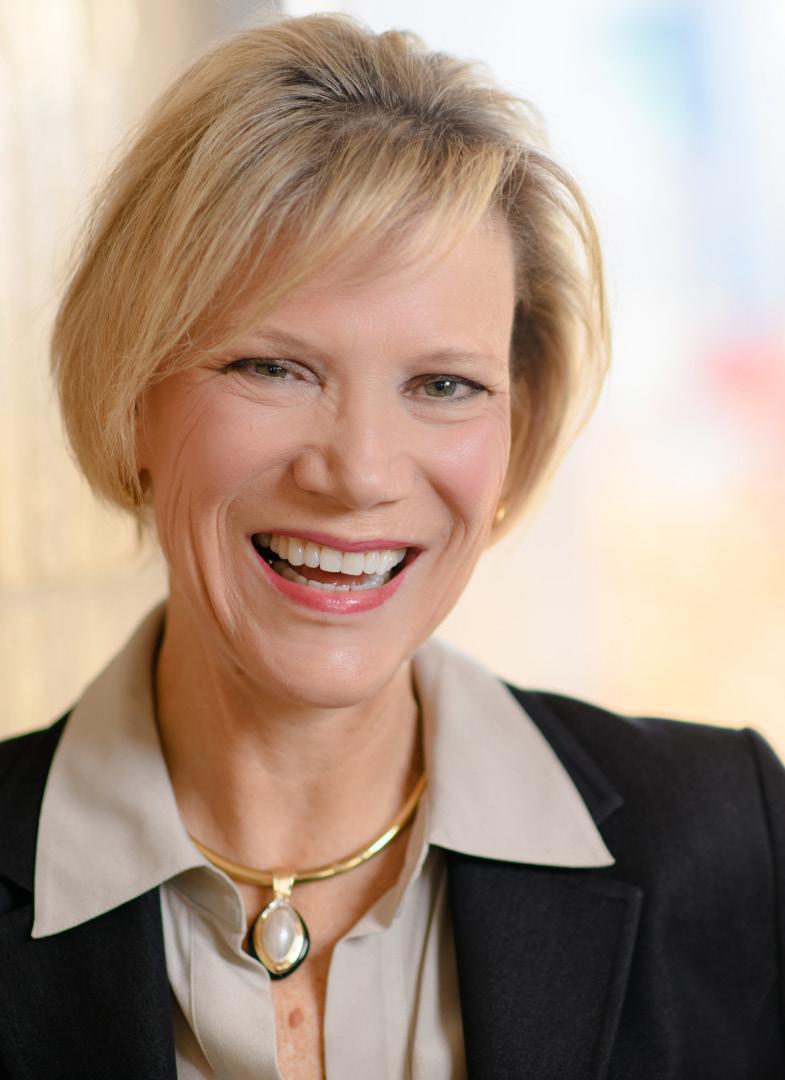
Managing all this takes knowledgeable, skilled leadership. That is Erica’s strength.
A healthy, vibrant ASO relies on both quality artistry and quality administration. We can’t grow one without the other. The best way to demonstrate our confidence in Maestro Novo’s vision and Erica’s leadership is to provide them with funding flexibility through an unrestricted gift to position the ASO for the future. Most of our funding comes from individuals like you, so thank you! Please consider donating or increasing your gift today. Any amount counts!
Warm regards,

Shelley Row



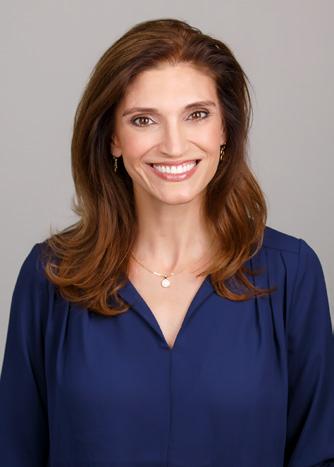



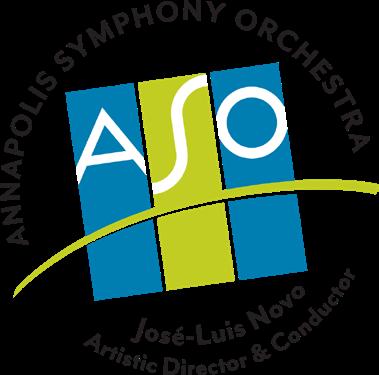
SHELLEY ROW, PE, CSP Chair
KATHERINE EDWARDS, MD Vice Chair
ANN WHITCOMB Vice President-Finance
ROBERT ARIAS
GEORGIANNA CROSBY
WILLIAM DAVIS
GINGER FROM SONJA GLADWIN
CHARLIE GRUDZINSKAS
COLLOT GUERARD
MICHELLE HELLSTERN
WILLIAM HOFF
DEB HOWE
TRUSTEE EMERITUS
MONIQUE Y. LANGSTON Secretary
STEPHEN SOTACK Treasurer
GERALDINE “MIMI” LADD JONES
JEANNE KELLY
ELIZABETH MAXWELL-SCHMIDT, MD
MARY MCKIEL, PHD Immediate Past Chair
MARIE TREANOR
FLORENCE CALVERT JILL KIDWELL
JOSÉ-LUIS NOVO
Artistic Director & Conductor
ANN TRAN FASO Board Representative
ORCHESTRA REPRESENTATIVE
ALEXANDRA MIKHLIN
Musicians’ Representative, Players’ Committee
The mission of the Annapolis Symphony Orchestra is to inspire, educate, and enrich lives near and far by creating extraordinary musical experiences with uncompromising artistic excellence.
With a 63-year history of artistic excellence, the Annapolis Symphony Orchestra is recognized as the largest and most distinguished performing arts organization in Maryland’s capital city. Under the direction of José-Luis Novo, the Symphony continues to rise in excellence and national reputation, performing Masterworks, Pops, Family Concerts, and special events. The Symphony reaches thousands annually with its free Pops in the Park concert, performances in partnership with the United States Naval Academy and the Annapolis Opera, and collaborative projects with other arts organizations and touring headliners. Additionally, ASO sponsors award-winning education concerts and outreach programs in community schools, sharing the joy of music-making with thousands of school children, including through the Annapolis Symphony Academy (ASA).
ANNAPOLIS SYMPHONY ORCHESTRA STAFF
ERICA BONDAREV RAPACH
Executive Director
JULIE NOLAN
Director of Education, Community Outreach, and Grants
SARAH JOHANSEN Director of Business Operations
OLIVIA REN Orchestra Librarian
MIRIAM FOGEL Director of Artistic Operations
MAYA MCATEE Office & Data Manager
DIANA LOVE Director of Marketing & Communications
DAVID SCIANNELLA Operations Manager
ANNAPOLIS SYMPHONY ACADEMY STAFF
NETANEL DRAIBLATE
ASA Director
HEATHER HAUGHN
ASA Department Head, Strings
JULIE NOLAN
ASA Assistant Director
KIMBERLY VALERIO
ASA Chair, Winds & Brass
ANTHONY VALERIO
ASA Conductor, Aquarius Wind Ensemble
ANNAPOLIS SYMPHONY ORCHESTRA 801 CHASE STREET, SUITE 204| ANNAPOLIS, MD 21401 410-263-0907 (BOX OFFICE) | 410-269-1132 (ADMIN)
ANNAPOLIS SYMPHONY .ORG
Under writer, The Philip Richebourg Ar tistic Director and Conductor ’s Chair
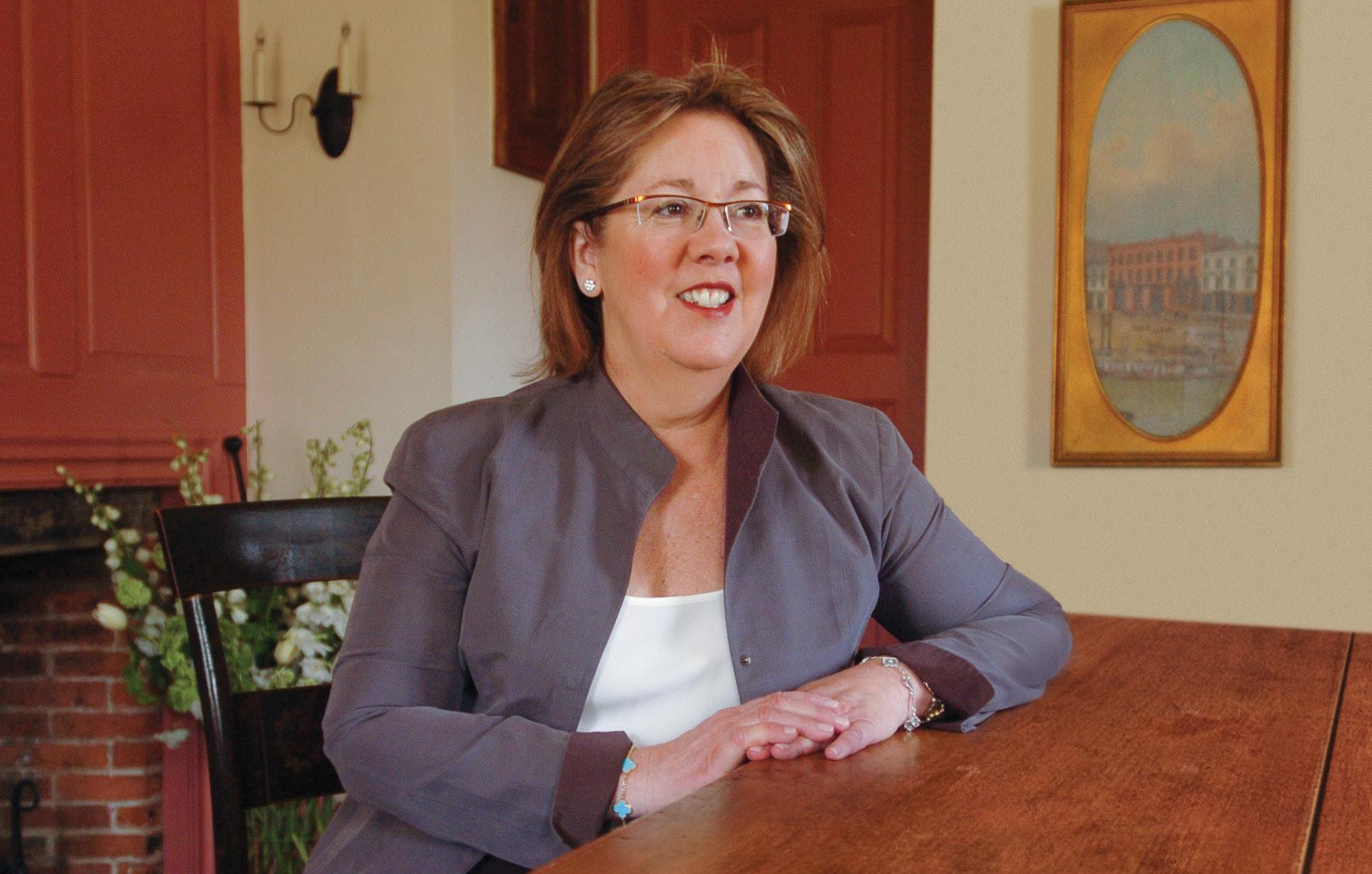
THE PHILIP RICHEBOURG ENCORE CIRCLE honors multi-annual pledges of $100,000+
Elizabeth Richebourg Rea, in honoring the legacy of her father, Co-Founder of the Annapolis Symphony Orchestra, created a legacy of her own. In 2011, she donated the largest single contribution in the history of the orchestra for the 50th Anniversary Season. This generosity transformed giving by inspiring future endowments of substantial amounts in addition to pledges spanning multiple years. Her pioneering leadership has created new levels of support, enabling the A SO to expand our work on stage and in the community. Elizabeth is underwriter of the Artistic Director and Conductor’s Chair in her father’s name and in addition is the founding member of the Philip Richebourg Encore Circle.
Elizabeth Rea is a fine ar t photographer and curator She has curated numerous Joseph Cornell exhibitions and two Roy Lichtenstein Retrospectives. Elizabeth is President of the Dungannon Foundation, sponsor of the Rea Award for the Shor t Stor y. She ser ves on the Peggy Guggenheim Advisor y Board and is an Honorar y Trustee of the Solomon R Guggenheim Foundation.
Co-Founder and First Board President Annapolis Symphony Orchestra
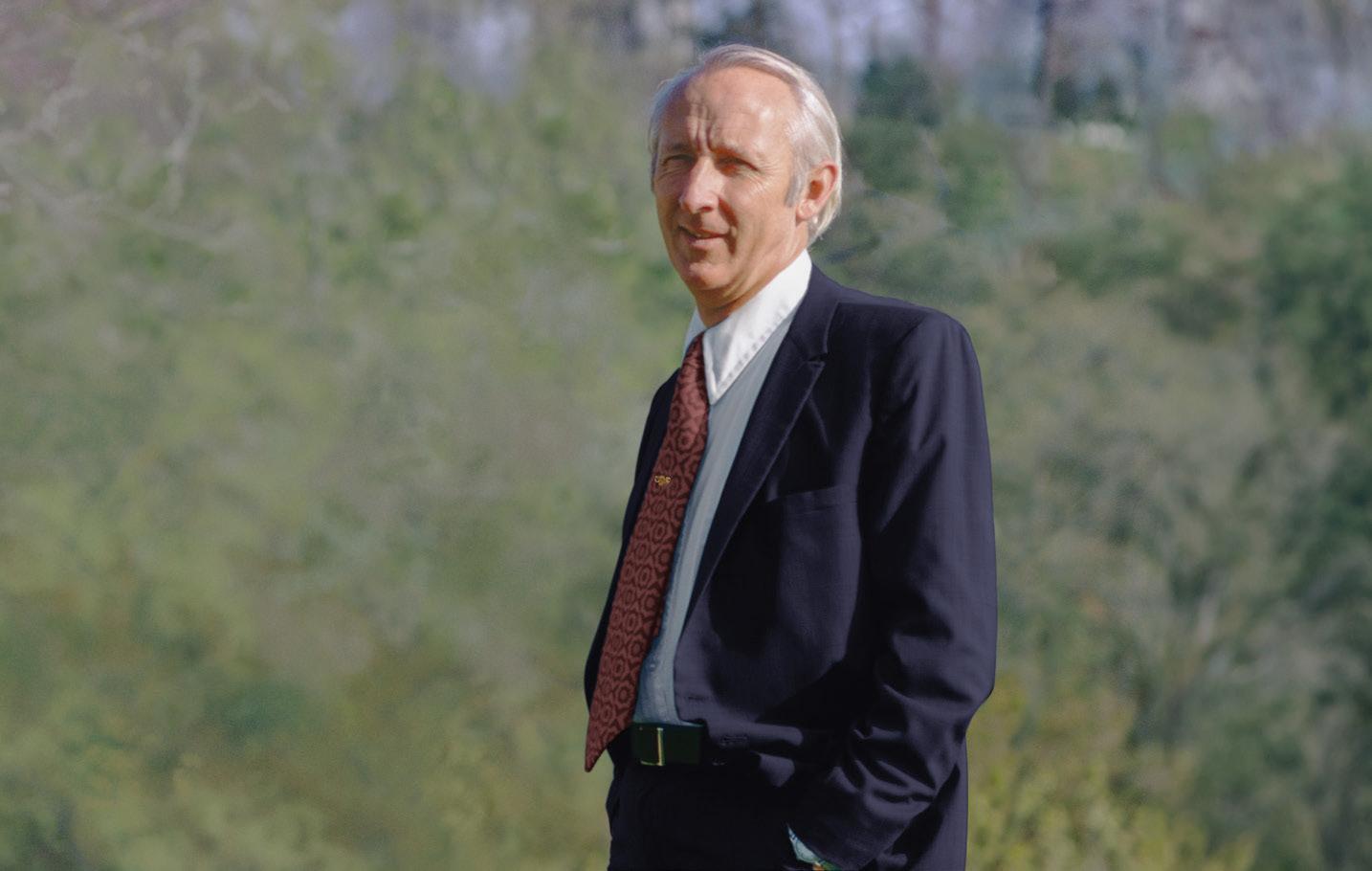
1972
“My father Philip Richebourg conducted his own orchestra ever y da y of his life. He personified exactitude and precision in business; in ser vice to his community and in leadership on numerous Boards. He was meticulous in his passions as pilot, musician, archi vist. Dedicated to each task at hand my father approached all things in life as if resolute in achieving one goal, that of per fect harmony ” professional orchestra, Philip was at the helm every step of the way. His commitment, dedication, and passion for musical awareness leaves an indelible mark on the history of the A SO. The Annapolis Symphony Orchestra would not be what it is today without him.
The Annapolis Symphony Orchestra is indebted to Philip Richebourg, Co-Founder and First Board President (1967-1974). Philip Richebourg ’s stalwart support, organizational vision and strong leadership during its formative years helped solidify the orchestra financially and administratively, ensuring its longevity and signature as one of Maryland’s most distinguished performing arts organizations. Philip passionately supported the Annapolis Symphony Orchestra as it sought to enrich the lives of the community through classical music and educational programs. From the modest beginnings of a small community ensemble to the present acclaimed
Maryland State Arts Council
Arts Council of Anne Arundel County
Elville Center for the Creative Arts
Friends of the Annapolis Symphony Orchestra (FASO)
Community Foundation of Anne Arundel County
Impact 100 Chesapeake Chapter
Ken Code, Dea Code Foundation
Council Family Foundation
JoshuaOneNine Fund
The J.M. Kaplan Fund
The Dealy Foundation, Inc
Paige Miller Memorial Scholarship
National Philanthropic Trust
Murray, McGehrin & Shiery at

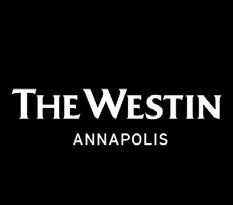
Rotary of Annapolis
Annapolis Musicians Fund for Musicians
Lewis Family Fund Grant
Pew Foundation
Progress Family Foundation
Charities Aid Foundation America
Frederick R. Galloway Charitable Trust
The Links, Incorporated
Loaves & Fish 247 Fund
Music Educators of Greater Annapolis
Pledgeling Foundation
Schmidt Family Charitable Fund
U.S. Charitable Gift Trust
United Way of Central Maryland




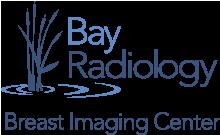
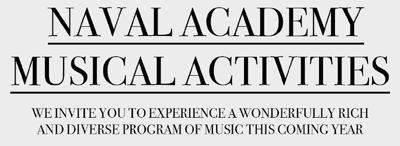
THE
PHILIP RICHEBOURG CHAIR
Spanish-born José-Luis Novo has instilled a new and vibrant artistic vision into the Annapolis Symphony Orchestra since his appointment as Artistic Director and Conductor of the Maryland-based symphony in 2005. Highlights of Novo’s tenure include numerous appearances at the Music Center at Strathmore with violinists James Ehnes, Anne Akiko Meyers, Leticia Moreno, and Chee-Yun, pianist Olga Kern, late cellist Lynn Harrell, guitarist Manuel Barrueco, pipa virtuoso Wu Man, and the Naval
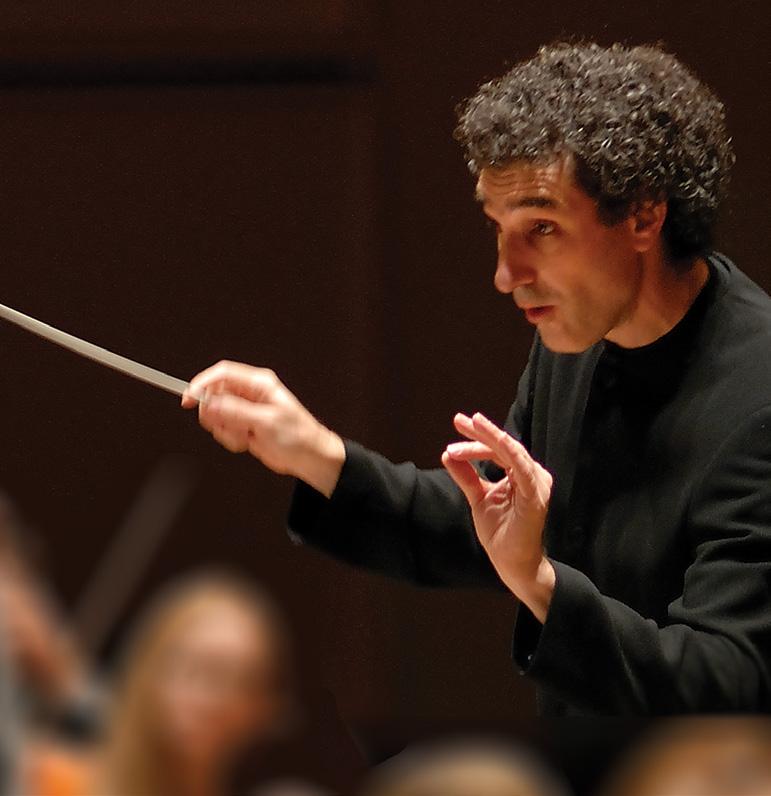
Academy Glee Club. Also remarkable are a 2012 return appearance at the Clarice Smith Performing Arts Center with mezzo-soprano Denyce Graves, national broadcasts on NPR’s Performance Today, debut TV broadcasts on Washington’s WETA Metro PBS, the launching of the ASO’s award-winning streaming platform Symphony+, the creation of the Annapolis Symphony Academy, and the ASO’s first commercial CD commemorating the 300th anniversary of the signing of the City of Annapolis’ Royal Charter. In July of 2022, Maestro
The Artistic Director’s Chair is graciously underwritten by Elizabeth Richebourg Rea, daughter of Philip Richebourg, Annapolis Symphony Orchestra Co-Founder and First Board President (1967-1974).
“My father conducted every day of his life as if resolute in achieving perfect harmony. I can think of no greater legacy than naming the Artistic Director’s Chair after my father, Philip Richebourg.”
Novo and the ASO stunned audiences on both sides of the Atlantic in a debut international tour to Spain with guitar virtuoso Pepe Romero as guest soloist.
Maestro Novo’s continuous drive for artistic excellence, innovative thematic programming, and collaborations with some of today’s most respected guest artists keeps generating unprecedented artistic growth and enthusiastic reviews from publications such as The Washington Post and The Baltimore Sun
In addition to his directorship of the ASO, Maestro Novo held an impressive thirteen-year tenure as Music Director and Conductor of the Binghamton Philharmonic in New York state from 2003 to 2016. Prior to this, he served as Assistant Conductor of the Cincinnati Symphony Orchestra under both late Music Director Emeritus Jesús LópezCobos and former Music Director Paavo Järvi, and the Cincinnati Pops Orchestra under the late Erich Kunzel.
Recent and upcoming guest conducting engagements include debut appearances
with the Rochester Philharmonic, the Grand Rapids, Hilton Head, Palm Beach, Alexandria, and South Bend Symphony Orchestras, and return appearances with the Baltimore Symphony, the Fresno Philharmonic, Symphoria, and a Kimmel Center debut in Philadelphia conducting the Curtis Institute Orchestra. After a successful debut with the Thailand Philharmonic Orchestra (TPO) for the Thailand International Composition Festival in 2015, Maestro Novo has been invited back regularly to guest conduct the TPO on several occasions. Other guest conducting engagements have included appearances with the Symphony Silicon Valley; the Minnesota Orchestra; the Syracuse, Modesto, Windsor, Stamford, Tulsa, and Tallahassee Symphonies; the Cincinnati Chamber Orchestra; the Cleveland and Abilene Philharmonics; and most of the major Spanish orchestras.
José-Luis Novo has also fostered a reputation as a keen educator of young musicians. He has held conducting
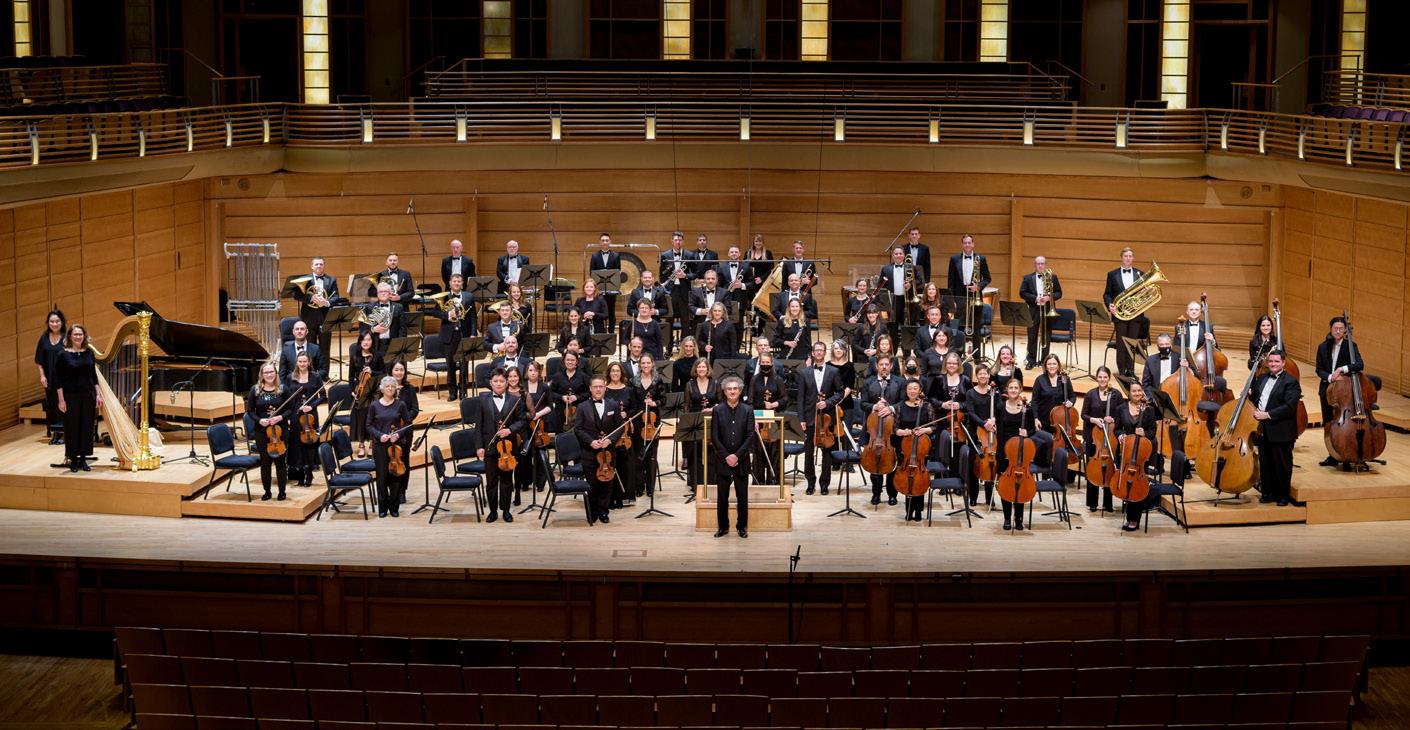
positions with the Cincinnati Symphony Youth Orchestra, University of Maryland Symphony Orchestra, Miami University Symphony Orchestra, and National Repertory Orchestra, and has been on the conducting faculty at the Eastern Music Festival in Greensboro, North Carolina since 1999. In addition, he has conducted many noteworthy college and youth orchestras such as the Curtis Institute Orchestra, the Cleveland Institute of Music Orchestra, the Bard Conservatory Orchestra, the Ithaca College Symphony Orchestra, and the Portuguesa State Youth Orchestra of the Venezuelan El Sistema. Under the auspices of the Annapolis Symphony Academy, he presided over the debut of its Orion Youth Orchestra, conducting the inaugural concert in June 2022.
Maestro Novo was featured in the League of American Orchestras Symphony magazine in “Podium Powers,” an article about emerging Hispanic conductors in the United States of America. He holds music degrees from the Cleveland Institute of Music, Yale University, and the Royal Conservatory of Music in Brussels, and is the recipient of a 2010 Annie Award in Performing Arts from the Arts Council of Anne Arundel County, a 2008 American Society of Composers, Authors, and Publishers Adventurous Programming Award, and a 2005 Broome County Arts Council Heart of the Arts Award.

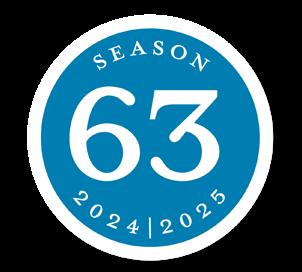
February 28, 7:30 PM | March 1, 7:30 PM MARYLAND HALL
March 2, 3:00 PM MUSIC CENTER AT STRATHMORE
José-Luis Novo, Artistic Director & Conductor, The Philip Richebourg Chair
Noah Bendix-Balgley, violin
Overture to The Creatures of Prometheus, Op. 43
Ludwig van Beethoven (1770–1827)
Serenade (after Plato’s Symposium) Leonard Bernstein (1918–1990)
I. Phaedrus—Pausanias (Lento—Allegro marcato)
II. Aristophanes (Allegretto)
III. Eryximachus (Presto)
IV. Agathon (Adagio)
V. Socrates—Alcibiades (Molto tenuto—Allegro molto)
Noah Bendix-Balgley, violin
- INTERMISSION -
Symphony No. 8 in F major, Op. 93
I. Allegro vivace e con brio
II. Allegretto scherzando
III. Tempo di menuetto
IV. Allegro vivace
Ludwig van Beethoven (1770–1827)
Four Dances from Estancia, Op. 8a Alberto Ginastera (1916–1983)
I. Los trabajadores agrícolas (The Farm Workers)
II. Danza del trigo (Wheat Dance)
III. Los peones de hacienda (The Ranch Hands)
IV. Danza final: Malambo (Final Dance)
Photography and video/audio recording are not permitted in the concert hall. Please silence all electronic devices. Thank you.
Netanel Draiblate, Concertmaster
Nicholas Currie, Associate Concertmaster
Hanbing Jia, Assistant Concertmaster
Abby Armbruster
Yoon Young Bae
Qian Zhong
Susan Benac
William Wang
Heather Haughn
Justin Gopal
Jennifer Rickard
Paula Sweterlitsch
VIOLIN II
Christian Tremblay, Principal
Alexandra Mikhlin, Acting Associate Principal
Megan Gray
Sally Stallings Amass
Sara Schneider
Angela YuTing Chew
Paul Bagley
Joseph Smith
Yan Izquierdo
Glen Kuenzi
VIOLA
Sarah Hart, Principal
Derek Smith, Associate Principal
Susan Taylor Dapkunas
Kate Zahradnik
Rachel Holaday
Brian Shoop
Michael Sinni
Kunjing Dai
Pei Lu, Acting Principal
Nicole Boguslaw, Acting Associate Principal
MaryAnn Perkel
Alison Bazala Kim
April Studeny
Peter Kibbe
Lavena Johanson
Erin Snedecor
BASS
Patrick Raynard, Principal
Benjamin Crofut, Associate Principal
Broc Mertz
Adriane Irving
Brandon Smith
Peter Cohn
FLUTE
Lauren Sileo, Acting Principal
Genevieve Eichman
OBOE
Amelia Merriman, Acting Principal
Amanda Dusold
CLARINET
Robert DiLutis, Principal
Brian Eldridge
BASSOON
Jimmy Ren, Acting Principal
Stephen Rudman
HORN
Alex Kovling, Principal
Shane Iler, Associate Principal
Ho Hin Kwong
Anthony Valerio
Kevin Grasel
TRUMPET
Christopher Sala, Principal Christopher Buchanan
TIMPANI
Curt Armbruster, Principal
PERCUSSION
William Kan, Principal
Anthony Asero
Gustavo Barreda
Andrew Henry
Robert Jenkins
Gerald Novak
HARP
Madeline Jarzembak, Acting Principal
PIANO
Tomoko Kanamaru, Acting Principal
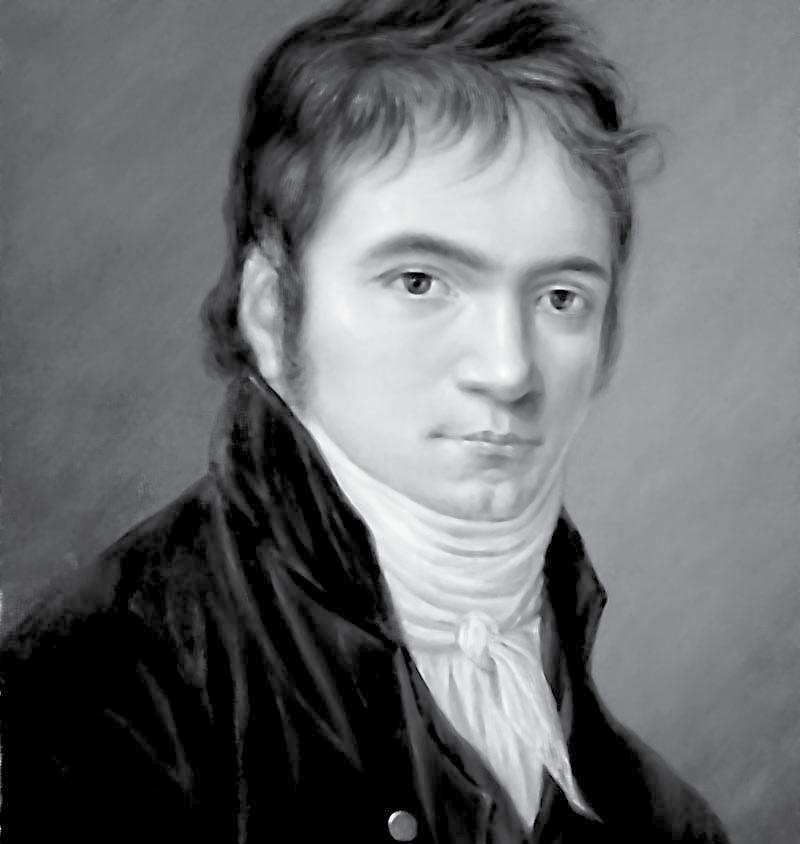
Overture to The Creatures of Prometheus, Op. 43
Baptized Dec. 17, 1770, Bonn | Died Mar. 26, 1827, Vienna
A musical prodigy, Ludwig van Beethoven learned piano and violin from his father as a young child, and he made his first public appearance at age seven. Beethoven also learned organ, viola, musical theory, and composition; a 1783 public notice of Beethoven described him as a “youthful genius” with “promising talent.” As Beethoven began publishing compositions and performing internationally, he gained important patrons who supported his career, and he eventually established himself in Vienna.
Though today, Beethoven is most known for his symphonies, concertos, and string quartets—works for the private or public concert hall—he did write some works for the theater. Beethoven first composed music for a ballet in 1791; Ritterballet ( Knight’s Ballet) was produced by Beethoven’s friend and patron Count Ferdinand von Waldstein. Because his name was not publicly announced with
the work, Beethoven’s composition of this music is still not widely known today. Beethoven’s only other foray into ballet was for Die Geschöpfe des Prometheus (The Creatures of Prometheus), composed 1800–1801, on commission from Italian ballet master Salvatore Viganò, who would present the ballet to Empress Maria Theresa. The Creatures of Prometheus premiered at the Burgtheater in Vienna on March 28, 1801. A ballet in two acts, The Creatures of Prometheus tells of the god’s gift of fire, as well as his gifts of science and art through other deities. Viganò called the work “heroicallegorical,” as the lessons parallel the values of the Enlightenment.
The sudden fortissimo start of the Overture serves the function of grabbing the audience’s attention, signaling the beginning of the ballet. In how the opening C chord leads away from C major into F major, the Overture is reminiscent of Beethoven’s first symphony, which premiered a year before The Creatures of Prometheus . Beethoven also alludes to the form of the French Overture (the standard introduction to ballets and dance suites in the Baroque era) with the slower, Adagio first section followed by a faster, Allegro molto con brio section. The driving, lively theme of the quick section suggests flickering fire, and Beethoven would return to this theme in a brief fugato in the finale of the ballet. The Overture is full of Beethoven’s characteristic compositional features; especially audible is his use of sforzandos , triadic melodies, and the minor mode Sturm und Drang style.
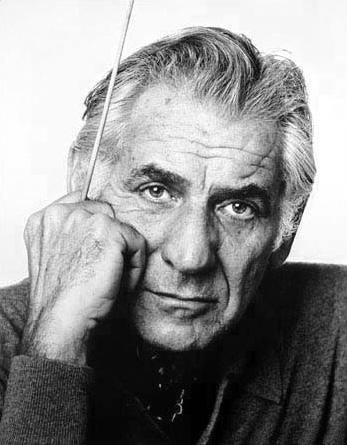
Born Aug. 25, 1918, Lawrence ǀ
Died Oct. 14, 1990, New York
American composer Leonard Bernstein was born in Massachusetts to a family of Jewish immigrants from Ukraine. He began playing music at age ten, when his aunt gave the family an old piano, and he began taking lessons at 14. Bernstein was also involved with opera and jazz during high school and—to his father’s chagrin—majored in music at Harvard. He then attended the Curtis Institute of Music and, in the summer of 1940, attended the Tanglewood Music Festival where he studied conducting with the famed Serge Koussevitzky. One of the first American conductors of international renown, Bernstein would eventually become the music director of the New York Philharmonic.
From 1953–1957 Bernstein worked almost concurrently on four works that today are considered some of his best:
Serenade (after Plato’s Symposium), the score to On the Waterfront , Candide , and West Side Story Serenade was written for violinist Isaac Stern, who edited the violin part. Stern performed the premiere of the piece with Bernstein conducting the Israel Philharmonic Orchestra in Venice on September 12, 1954. The piece was dedicated to Koussevitzky, who passed three years prior, and his former wife. Even though Bernstein stated that “there is no literal program for the Serenade ,” Bernstein himself supplied the program note for the premiere, which describes the relationship between his music and the ancient Greek philosopher’s Symposium , a dialogue about love:
Phaedrus opens the symposium with a lyrical oration in praise of Eros, the god of love. Pausanias continues by describing the duality of the lover as compared with the beloved. This is expressed in a classical sonataallegro, based on the material of the opening fugato.
Aristophanes does not play the role of clown in this dialogue, but instead that of the bedtime-storyteller, invoking the fairy-tale mythology of love. The atmosphere is one of quiet charm.
The physician speaks of bodily harmony as a scientific model for the workings of love-patterns. This is an extremely short fugato-scherzo, born of a blend of mystery and humor.
Perhaps the most moving speech of the dialogue, Agathon’s panegyric embraces all aspects of love’s powers, charms, and functions. This movement is a simple three-part song.
Socrates describes his visit to the seer Diotima, quoting her speech on the demonology of love. Love as a [spirit] is Socrates’ image for the profundity of love; and his seniority adds to the feeling of didactic soberness in an otherwise pleasant and convivial after-dinner discussion. This is a slow introduction of greater weight than any of the preceding movements and serves as a highly developed reprise of the middle section of the Agathon movement, thus suggesting a hidden sonataform. The famous interruption by Alcibiades and his band of drunken revelers ushers in the Allegro, which is an extended rondo ranging in spirit from agitation through jig-like dance music to joyful celebration. If there is a hint of jazz in the celebration, I hope it will not be taken as anachronistic Greek party-music, but rather the natural expression of a contemporary American composer imbued with the spirit of that timeless dinner party.
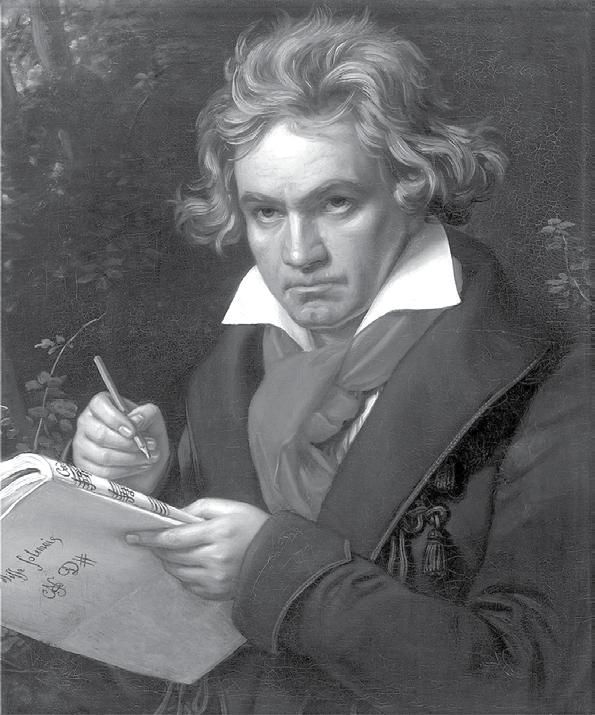
Baptized Dec. 17, 1770, Bonn Died Mar. 26, 1827, Vienna
Ludwig van Beethoven is now known as one of the three composers of the “First Viennese School,” the other two being Wolfgang Amadeus Mozart and Joseph Haydn, who both influenced Beethoven’s compositions. In 1792, Beethoven moved to Vienna to study with Haydn; his patron Count Ferdinand von Waldstein wrote that Beethoven would “receive Mozart’s spirit from Haydn’s hands.” It was Haydn’s final symphonies, brought back to Vienna when Haydn returned in 1795 from his second visit to London, that first inspired Beethoven to try his own hand at the genre.
Though Symphony No. 8 uses wellknown Classical era idioms, the work had a mixed reception, puzzling many audience members. Its inner movements are notably short, and
curiously, there is no real slow movement, which is standard in the genre. Beethoven called Symphony No. 8 his “smaller symphony,” as it is the shortest symphony he composed. The symphony was completed in 1812 and received its premiere in Vienna on February 27, 1814.
The Allegro vivace e con brio first movement starts with a motive that is woven throughout the piece, creating unity across the entire composition. Following tradition, the first movement uses sonata form, introducing themes in the exposition, exploring those themes as well as new keys in the development, and then returning to the original key and theme for a dramatic recapitulation followed by a coda. The second movement is not the typical slow movement but instead a lively Allegretto scherzando. Repeated staccato woodwind chords perhaps allude to Haydn’s “Clock” Symphony, and many interpret this to also be a reference to the metronome, which was in development in 1812, when the symphony was completed. The Menuetto third movement opens with heavy sforzandos in the lower strings, creating a peasant-like atmosphere that contrasts with the flowing melody. French horns and a solo clarinet accompanied by triplets in the cellos signal the start of the trio, and the movement closes by returning to the first section. The final Allegro vivace movement is by far the longest, which is a deviation from the typical Classical symphony that emphasized the first movement.
Beethoven combines sonata form and rondo form in this movement, giving two developments and two recapitulations. Sudden fortissimo C-sharp interjections—a completely unexpected note for the key—are examples of how Beethoven explored dynamic changes and remote keys in his compositions.
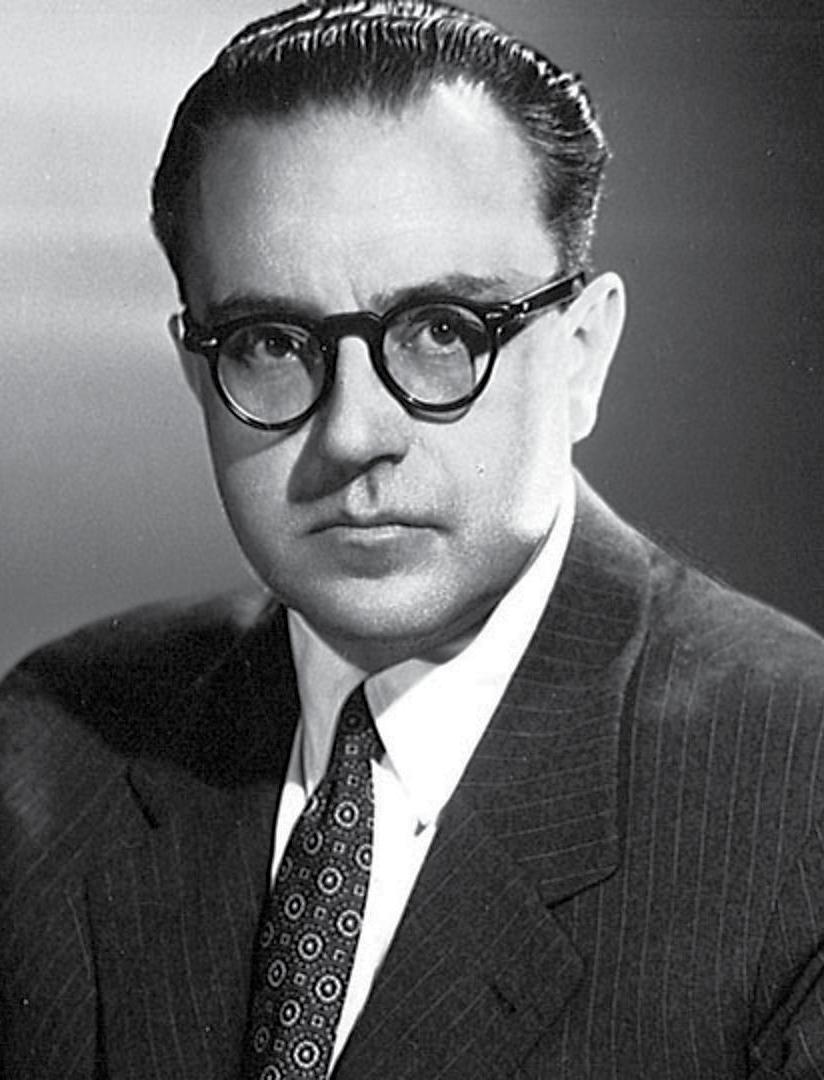
Born Apr. 11, 1916, Buenos Aires ǀ
Died Jun. 25, 1983, Geneva
Argentine composer Alberto Ginastera studied music as a young child and enrolled in the Conservatorio Williams, graduating in 1935 with the composition prize. Ginastera then enrolled in the Conservatorio Nacional de Música to study harmony, counterpoint, and composition. While he was still a student, Ginastera composed the music for the ballet Panambí about an
indigenous Guaraní legend, as well as a suite of dances from the ballet. The suite’s premiere in 1937 was so wellreceived that it established Ginastera’s reputation as a leading Argentine composer, even before he graduated in 1938. In 1940 the full ballet Panambí received its premiere, and its success led to a commission for Ginastera to compose music for another ballet, Estancia . Ginastera completed Estancia in 1941, and that same year excerpted four dances from it for a suite. Because the commissioning ballet troupe disbanded in 1942, the ballet’s premiere was delayed for ten years. The suite of four dances premiered in 1943, and this work, along with others around the same time, quickly cemented Ginastera as one of the best composers associated with the Argentine musical nationalist movement. This movement was focused on celebrating Argentine identity and pride by using cultural traditions, especially those connected to history or with the “folk.”
Estancia is based on the nineteenth century Argentine epic poem Martín Fierro by José Hernández. The poem tells of a gaucho (a nomadic horseman) named Martín Fierro and his bravery, honor, and strength throughout a series of adventures. Martín Fierro is written in the gauchesco style, drawing on the payada tradition of sung poetry and using language connected to the rural gaucho. These layers of “folk” traditions—the nineteenth century epic poem, gaucho figure, gauchesco literature, and payada music—make Estancia a rich example of Argentine nationalism.
The first dance in the suite, Los trabajadores agrícolas (The Farm Workers), depicts the harvest workers, lowly farmhands. Recurring rhythms imitate strumming, and the sonority references the specific tuning of gaucho guitar, therefore creating a sound world that evokes the “folk.” In Danza del trigo (Wheat Dance), the opening flute solo again uses the gaucho guitar tuning as inspiration for the sonority. The lyrical melody paints a pastoral picture, celebrating the Argentine countryside. Los peones de hacienda (The Ranch Hands), the third dance in the suite, has the same punching, repeated chords as the first movement, but this time with more hemiolas, therefore creating the zapateo step common in many folk dances. Just as the music parallels the first movement, so does the title; this movement depicts the low-status cattle workers on grand hacienda estates. The Danza final: Malambo is really a twopart dance: the first section evokes the gato dance, and the second section is the malambo. High woodwinds and glissandos are typical of Ginastera’s use of the flirtatious gato dance, in which a couple circles without touching, the man stomping in a zapateo step and the woman twirling her skirt. The high winds and xylophone begin the malambo with a melody of continual regular eighth notes, imitating the regular dance steps of the gaucho.
Program notes by Elizabeth Massey, Ph.D.
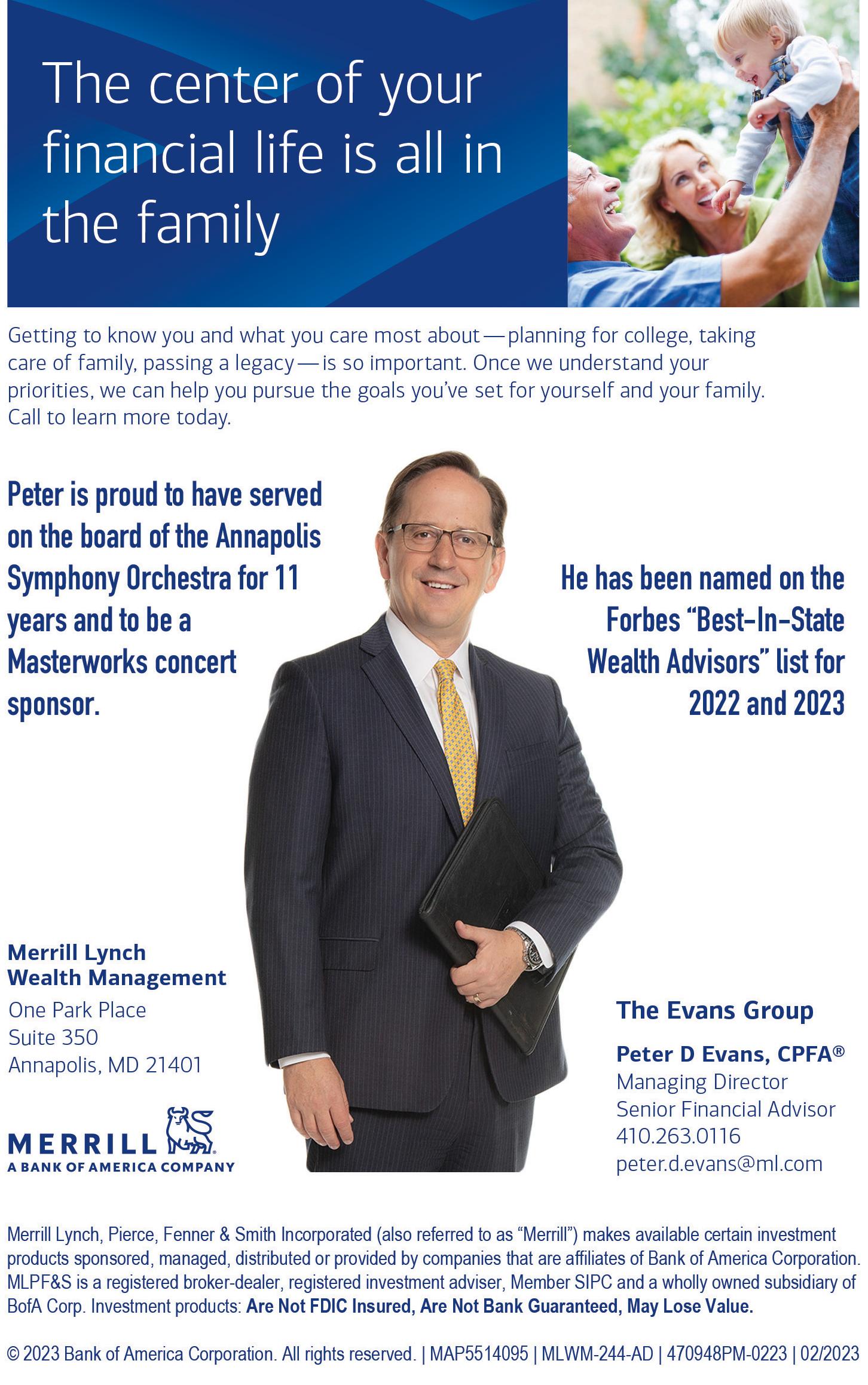
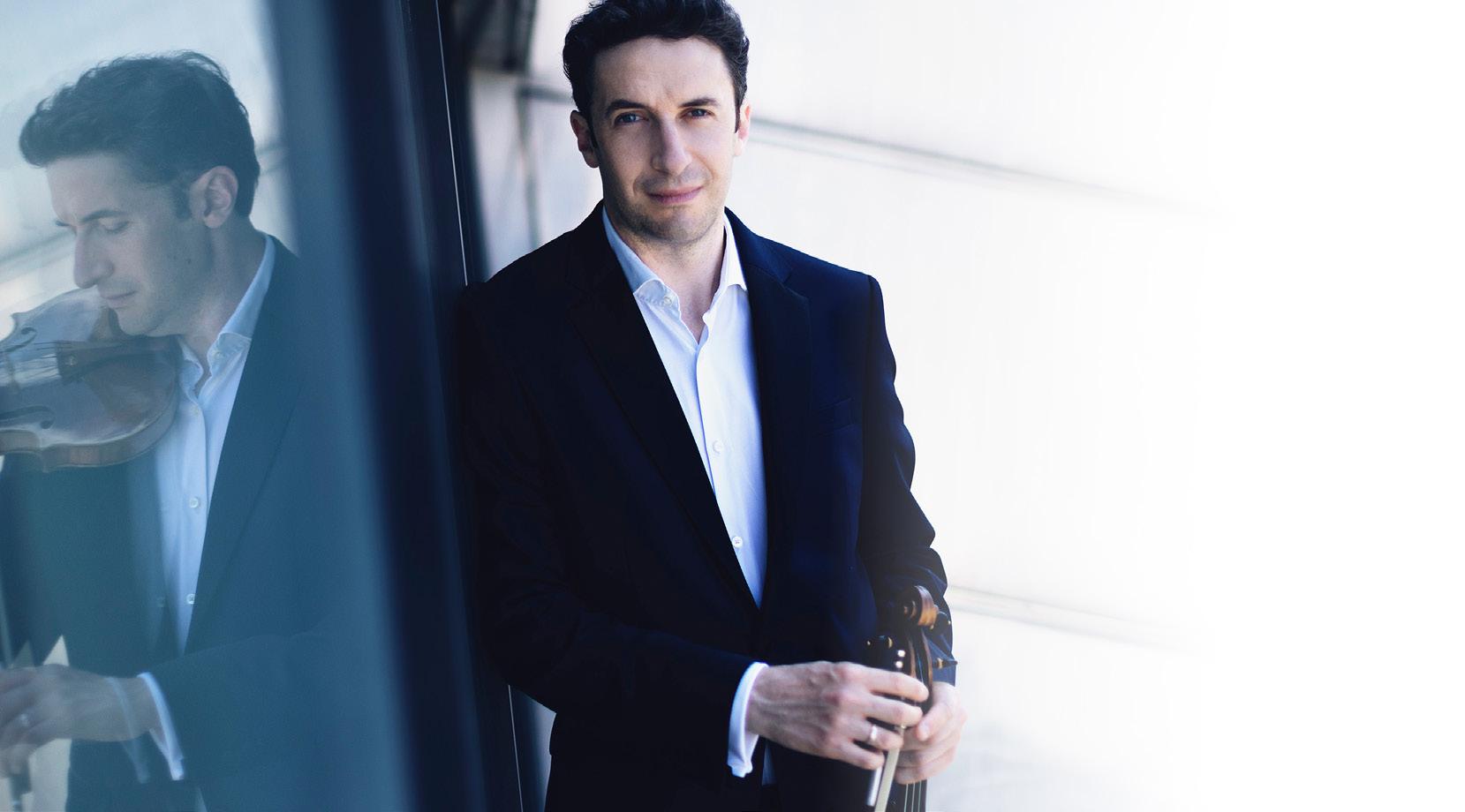
Noah Bendix-Balgley enjoys a wideranging musical life as a violinist. He is First Concertmaster of the Berliner Philharmoniker and tours both as a chamber musician and as a soloist. His clear and heartfelt personal sound has reached and moved listeners around the world.
As soloist, Mr. Bendix-Balgley appears frequently with leading international orchestras, as well as in recital at the world’s finest concert halls. Recent highlights include his concerto debut at Carnegie Hall as the featured soloist on the Berliner Philharmoniker USA tour under the direction of Kirill Petrenko, as well as concerto appearances with the Philharmonic Orchestras of Berlin, Dresden, Auckland, Nagoya, and Oklahoma City. He has also performed with the Verbier Festival Chamber Orchestra and the Shanghai, Utah, Quebec, Adelaide, and Pittsburgh
Symphony Orchestras. He has toured with Apollo’s Fire performing on period instruments, performed the Brahms Double Concerto with Alisa Weilerstein and the Aspen Music Festival Orchestra, toured with the Stuttgart Chamber Orchestra, and given recitals at the Philharmonie Berlin, Beethoven-Haus Bonn, National Forum of Music in Wrocław, and the National Concert Hall in Taipei. In the 23–24 season, he was Artist-in-Residence with his hometown Asheville Symphony, and also returned to the Guangzhou Symphony Orchestra and made his debuts with the NHK Symphony Orchestra and the Armenian State Symphony Orchestra.
Noah Bendix-Balgley is a renowned performer of traditional klezmer music. He has performed with groups such as Brave Old World, and has taught at many klezmer workshops. In 2016, he composed and premiered
his own klezmer violin concerto, Fidl-Fantazye, with the Pittsburgh Symphony Orchestra, where he was concertmaster from 2011 to 2015. Since the premiere, he has also performed the work with the Baltimore Symphony, China Philharmonic, and the Buffalo Philharmonic Orchestras; and a chamber orchestra version with Kammerakademie Potsdam and members of the Berliner Philharmoniker.
A passionate chamber musician, Noah performs in several ensembles: in a trio with pianist Robert Levin and cellist Peter Wiley, with the Rosamunde String Quartet, and with the multigenre septet Philharmonix, which features members of both the Berlin and
Vienna Philharmonics. His other recent chamber highlights include performances at the Seattle Chamber Music Society’s Summer Festival, Bergen International Festival, Sarasota Music Festival, ChamberFest Cleveland, Zermatt Music Festival, Festival d’Aixen-Provence, and La Jolla Summerfest.
Born in Asheville, North Carolina, Noah Bendix-Balgley began playing the violin at age four. At age nine, he played for Lord Yehudi Menuhin. He graduated from the Indiana University Jacobs School of Music and the Munich Hochschule. His principal mentors were Mauricio Fuks, Christoph Poppen, and Ana Chumachenco.
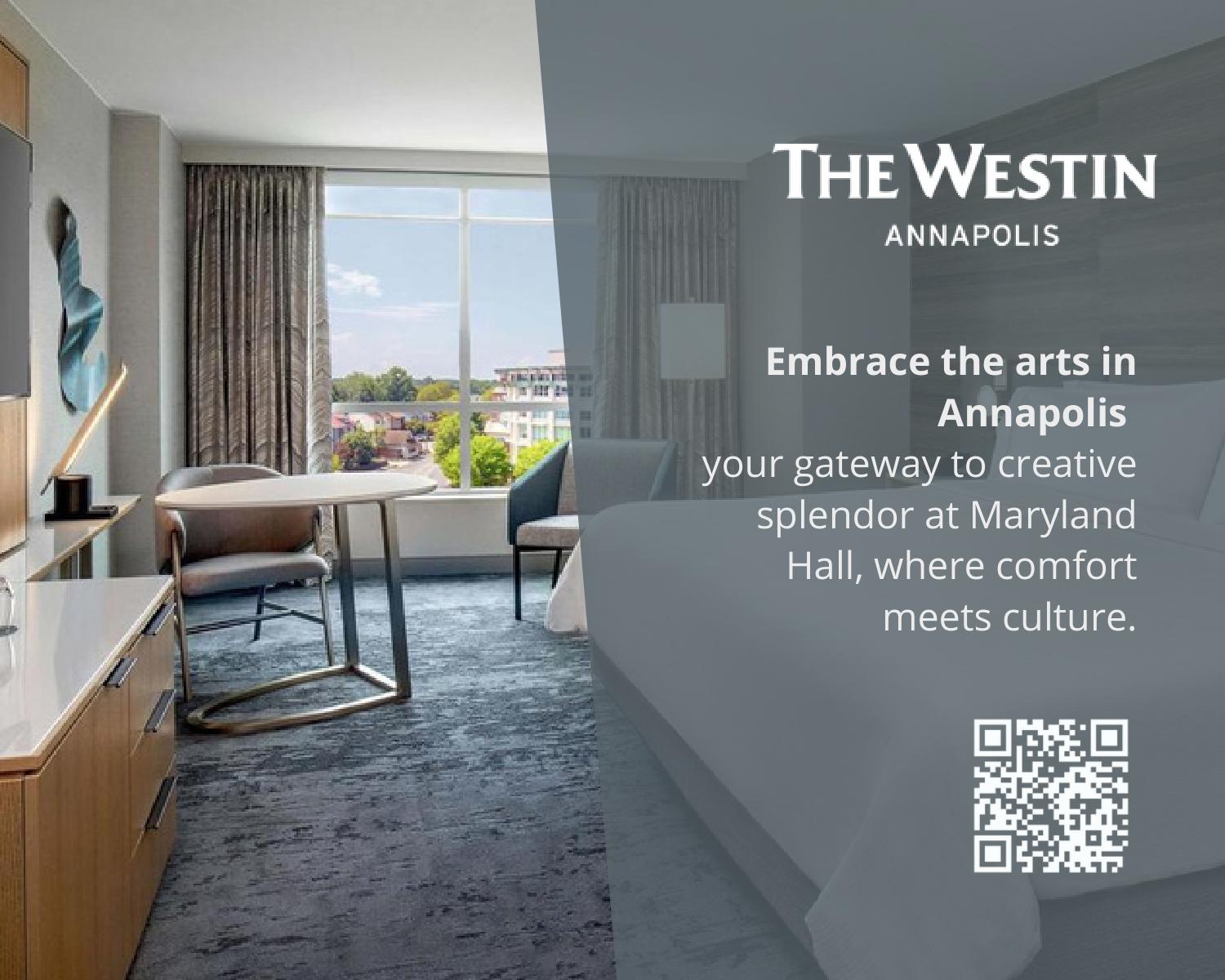
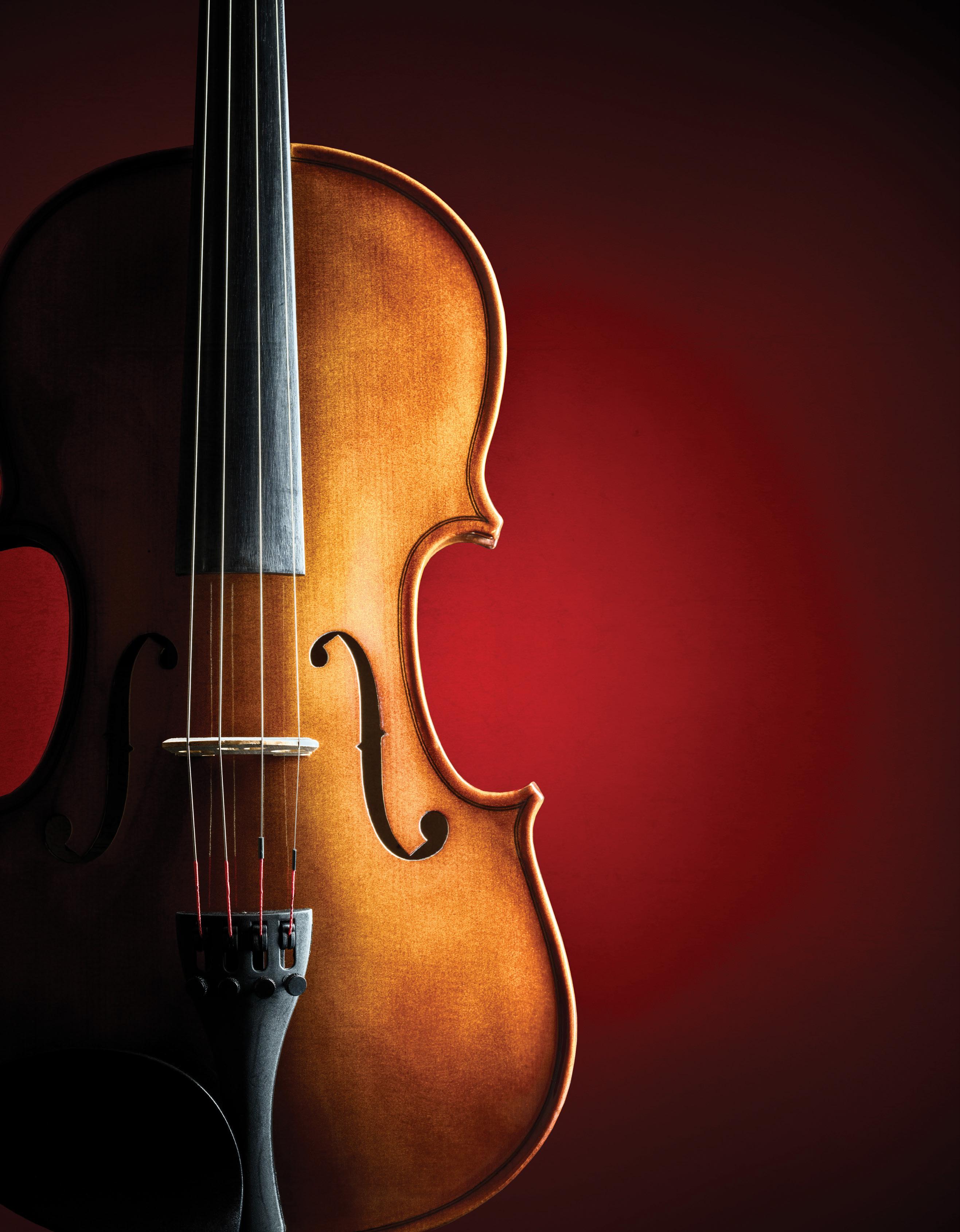
What’s Up? Media has been a proud supporting partner of the Annapolis Symphony Orchestra for over 25 Years.
Join us in a campaign to get all 55 of our currently tenured musicians sponsored! Sponsoring a musician is a transformative way to show your support for the Annapolis Symphony Orchestra. It is a special opportunity to personally connect with an individual musician and deepen your connection to the symphony.
José-Luis Novo
The Philip Richebourg Chair
VIOLIN I
Netanel Draiblate, Concertmaster
Sponsored by Jillinda Kidwell
Nicholas Currie, Associate Concertmaster
Sponsored by Laird Lott & Linda Gooden
Abby Armbruster
Sponsored by Mimi Jones
Yoon Young Bae
Sponsored by Drs. Mark Davis & Ann Tran
Susan Benac
Sponsored by Herb* & Sallie Abeles
Heather Haughn
Sponsored by Constance & William Scott
Rachael Stockton
Sponsored by Tara Balfe
Clifford
William Wang
Sponsored by Dr. Mary C. McKiel
VIOLIN II
Kristin Bakkegard, Associate Principal
Sponsored by Stephen A. Sotack
Sally Stallings Amass
Co-sponsored by Dr. Mary C. McKiel & Rosalie Lijinsky
Megan Gray
Sponsored by Lawrence & Jeanne Kelly
Karin Kelleher
Sponsored by Prudence Clendenning
Alexandra Mikhlin
Sponsored by Anna E. Greenberg
VIOLA
Derek Smith, Associate Principal
Sponsored by Al & Ginger From CELLO
Todd Thiel, Principal
The Hildegard Strothman
Martin Chair
Alison Bazala Kim
Sponsored by Dr. Elizabeth Maxwell-Schmidt & Mr. Steve Schmidt
Nicole Boguslaw
Sponsored by Norman J. Fisher & Doris Fisher Foundation
Catherine Mikelson
Sponsored by Patrick M. Green
MaryAnn Perkel
Sponsored by Florence Calvert
Daniel Shomper
Sponsored by Paula Abernethy
April Studeny
Sponsored by Judith Templeton
BASS
Patrick Raynard, Principal Sponsored by Collot Guerard
Peter Cohn
Sponsored by Anne S. Potter
Broc Mertz
Sponsored by Fred Stielow & Susan Rosenfeld
Kimberly Valerio, Principal
Sponsored by William Seale & Marguerite Pelissier
Genevieve Eichman
Sponsored by Russ Stevenson & Margie Axtell
OBOE
Fatma Daglar, Principal
The Sage Tower Mumma Endowed Chair
Rick Basehore
Sponsored by William & Renata Davis
CLARINET
Robert DiLutis, Principal Sponsored by Shelley Row
BASSOON
Patricia Morgan
Sponsored by Ann & Robert Whitcomb
HORN
Alex Kovling, Principal
Sponsored by Martha & John T. Schwieters
Anthony Valerio
Sponsored by Carole & Richard Falk
TRUMPET
Christopher Sala, Principal
The Philip Richebourg Chair
TROMBONE
David Perkel, Principal
Sponsored by David & Eleanor Huggins
David Sciannella
Sponsored by Robert & Kathleen Arias
Jay Heltzer
Sponsored by Peter Bungay, Joy Chambers & Ellen Posten
* Deceased
Thank you to our generous sponsors. If you’re interested in sponsoring a musician, please visit www.annapolissymphony.org/support or email development@annapolissymphony.org.
It is with our deepest gratitude that we acknowledge the following Legacy Circle Members for their commitment to the future of the Annapolis Symphony Orchestra and its place in our community.
Anonymous (3)
Melvin &
*Judy Bender
Bud & *Bee Billups
Elana Rhodes Byrd
James W. Cheevers
Elizabeth Colandro
Ronald E. Council
*Forbes Leland & *Marilyn Eason
*Patricia Edwards
*Colonel Allan &
*Audrey English
Patrick M. Green
Anna E. Greenberg
*Joe Bales Gruber
*Nancie Kennedy
*Dr. Michael Kurtz
Dr. Mary C. McKiel
*Mr. John P. McKim
Anne S. Potter
Susan Rosenfeld
Shelley Row
Stephen A. Sotack
To discuss including the Symphony in your Estate Plans, please contact development@annapolissymphony.org
Annapolis Symphony Orchestra Inc. Tax I.D. 23-7001357
*Deceased
We gratefully acknowledge these generous donors to the Annapolis Symphony Orchestra who have contributed to this fiscal year as of November 15th, 2024
The Annapolis Symphony Orchestra is sustained through your generous support. We are indebted to you for supporting our music making, education programs, and community initiatives.
GIFTS OF $1 MILLION +
John McKim*
Joyce Pratt & Jeff Harris + William Seale & Marguerite Pelissier
THE PHILIP RICHEBOURG CIRCLE
GIFTS OF $500,000 – $999,999
Elizabeth Richebourg Rea +
GIFTS OF $250,000 – $499,999
Robert & Kathleen Arias +
GIFTS OF $150,000 – $249,999
The Brian & Patricia Giese Foundation
Jillinda Kidwell + Maryland State Arts Council
Michael J. Mumma, Peter R. Mumma, & Amy Mumma R askopf +
GIFTS OF $50,000 – $149,999
Anonymous +
Paula Abernethy + Jane Campbell-Chambliss & Peter Chambliss
James W. Cheevers +
Mr. Arthur & Dr. Katherine Edwards +
Laird Lott & Linda Gooden
Impact100 +
Anne S. Potter + Shelley Row +
Stephen A. Sotack +
GIFTS OF $25,000
–$49,999
Anonymous
Anne Arundel County
Recreation & Parks
Arts Council of Anne Arundel County
Elville Center for the Creative Arts +
Peter & Sarah Evans + Al & Ginger From +
David & Eleanor Huggins
Mimi Jones +
Patricia & David Mattingley + Martha & John T. Schwieters +
GIFTS OF $10,000 – $24,999
Florence Calvert +
Friends of the Annapolis Symphony Orchestra
Collot Guerard
William H. Hoff + Deb Howe + Dr. Elizabeth MaxwellSchmidt & Mr. Steve Schmidt +
Clay & Carol Richards
Judith Templeton + Ann & Robert Whitcomb + Cecelia Wyatt
GIFTS OF $5,000 – $9,999
Peter Bungay, Joy Chambers & Ellen Posten
Susan Byrom & Robert Thomas
Hugh D. Camitta
Prue Clendenning
Multiyear pledges support the Orchestra’s strategic vision while ensuring a sustained level of funding. Thank you to everyone for signing pledge commitments of three years or more. These donors are recognized with a + beside their name.
Gifts of $5,000 - $9,999 cont.
Council Family Foundation
William & Renata Davis + Norman J. Fisher & Doris Fisher Foundation
Harley Flack
Capt. Mark & Michelle Hellstern (USN Retired) + JosuahOneNine Fund
Lawrence & Jeanne Kelly
Evelin Reynolds*
Russ Stevenson & Margie Axtell
GIFTS OF $2,500 – $4,999
Herb* & Sallie Abeles
Dea Code Family Foundation
Drs. Mark Davis & Ann Tran
Carole & Richard Falk
Patrick M. Green
Anna E. Greenberg
Scott Gregory & Angela
Eggleston-Howard
Pierre & Danalee Henkart
Richard & Lisa Hillman
Jan & David Hoffberger

Cole Porter, Guy Bolton, and P.G. Wodehouse’s








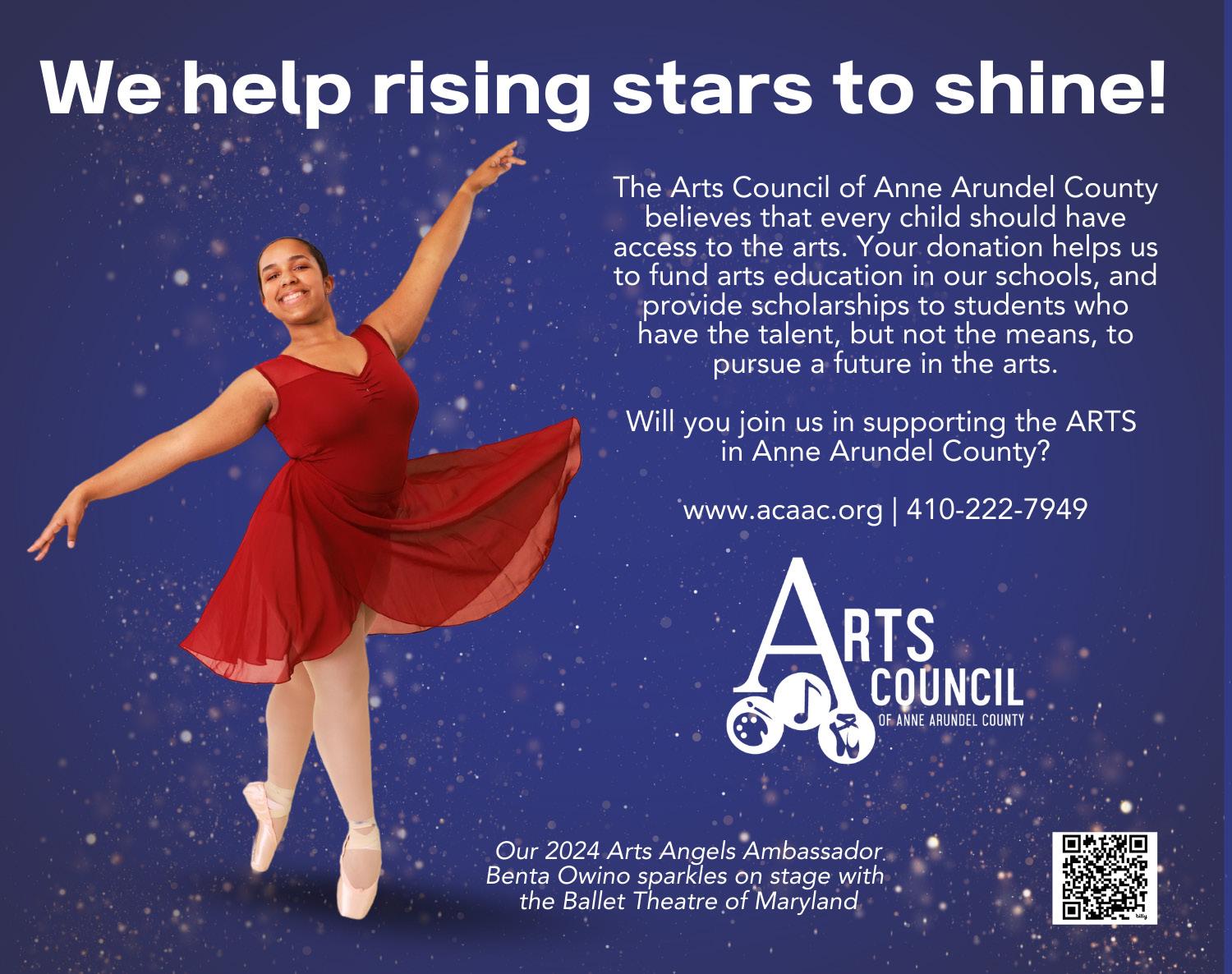
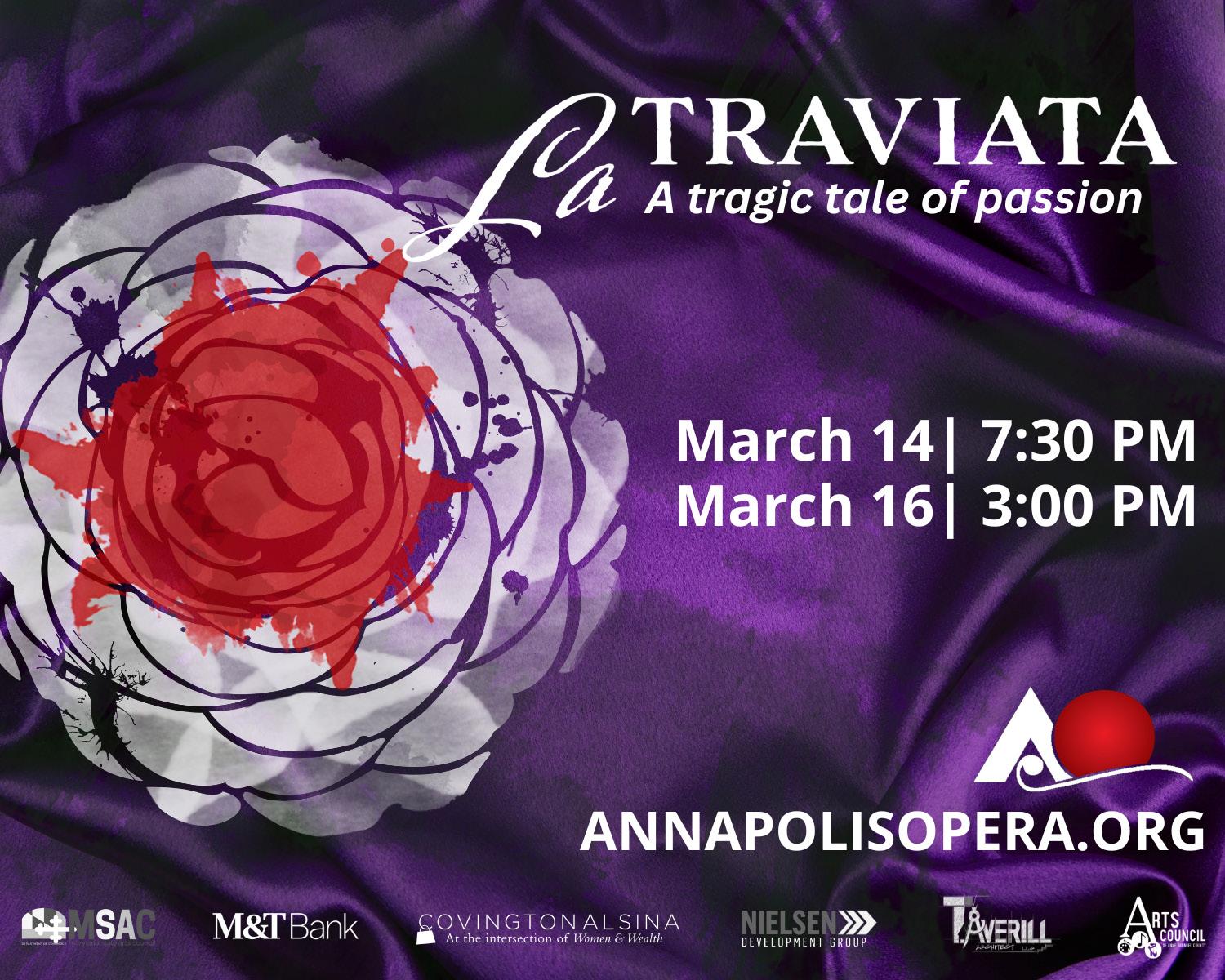
Karl & Marge Hoke
Elizabeth Mainiero
Dr. Mary C. McKiel
Music Educators of Greater Annapolis
José-Luis Novo & Lori Kesner
Steve Root & Nancy Greene
Raymond R.Ruppert, Molly M. Ruppert
Jeffrey Scherr & Wendy Jachman
Constance & William Scott
Doug & Karen Smith + Fred Stielow & Susan Rosenfeld
Joan Ruhl
Bill & Marilynn Sweetser
GIFTS OF $1,000$2,499
Anonymous (8)
Michael Alin & Ann Carroll
Jack & Leslie Andryszak
Annapolis Musicians Fund for Musicians
Melvin & Judy Bender
Renee Ehler & George Bentley
Ann Burchard
Ms. Sandy Cohen
Community Foundation of Anne Arundel County
Mr. & Mrs. Andrew Lynch
Cole
Enser & Marguerite Cole
Jesse Cunitz & Faith Goldstein Cunitz
Jane Danowitz
Mr. & Mrs. Robert Demoyer
Elizabeth GordonBluntschli
Bonnie Gorman
Bob & Diane Heaney
Mr. & Mrs. Robert M. Hecht
David R. Herron, Ph.D.
Mr. & Mrs. Jerry Hoot
Hugh & Deborah Houghton
The Johansen Family
Ted & Karen Kirakawa
Jim & Deb Laite
Katherine Lantz
Rosalie Lijinsky
Janet Little
Lynn Maichle
David McGill
Laura Murray
Jan O’Connor
James E & Cheryl H Painter
Beth Penn
Patricia Petrou
Barbara W. Pittman
Pamela Roeming
Rotary of Annapolis
Cynthia Scruggs
Bob Sherer
Jill Simon
Kathy Sorci
Mrs. Tamara & Dr. Stephan Tymkiw
Barbara Wing
GIFTS
Anonymous (2)
Michael & Judy Ackerman
Anne Agee
Linda Allen
Sandra Collyear Altherr
Sally Amass
Ms. Susan Armstrong
Ann J. Baker
Adele Baron
Jess & Susan Behringer
Julie Belkin
Randall Bell
Edward Bergman
Randal Billingsley
Martha Blaxall & Joe Dickey
Ms. Jeannie Block Bessmer
Elaine Bower
Elizabeth Bowers
Pat & Karen Brown
Carmen & Nancy Brun
Carole Burchette
David Bush
Rebecca A Byrd
Cindy Carlton
Deborah Chin
Dr. Mark Cinnamon
Elizabeth Colandro
Petey Cosby
Susan Craig
Laudine Creighton
Dr. Albert A. Del Negro, M.D., FACC, & Ms. Patrisha
C. Creevy, PA-C
Carl DeVore
James & Debra Dillon
Fred & Susan Eckert
Pauline Farmer
Mr. & Mrs. Millard
Firebaugh
James R. Fitzpatrick
Ted & Anne Foster
David & Cindy Fox
Frederick R. Galloway
Charitable Trust
Sonja Gladwin & Rod Straw
Michael J. Gray
Frances R. Hall
Georgina Hammond
Patty Harris
Jeffrey Harvey
D. Gayle Hensley
Gretchen Herdt
Lynne Malley
Paul Herman & Karen Goldman
Maureen Hess
Marian Holt
Dr. & Mrs. William Hunter
Kevin Hurley & Kathleen McDevitt
Sally W. Iadarola
Beth Jacaruso
Beth D. Jacob
Bruce & Danna Jones
Mr. & Mrs. Jordan
Kurt Karsten & Michelle Smith
Christine Kelsey
Nicholas Kemp & Kay Osburnsen
Leon & Barbara Kestenbaum
Getha Klejnot
Julia Krause
Alice F. Kurs
Dr. Monique Langston
Drs. Frank LaScala & Gladys Rivera-LaScala
Dr. & Mrs. Norman Lerner
Ellen Levin
David R. Lewis Family Foundation
Susanne Lieberman
Timothy & Katherine Lynch
Joan Machinckick
Robert W Madden Jr
Sandra Mayo
Elaine Mines
Priscilla Mitchell
Francisco Montero
Betty Morganstern
Don & Carol Nelson
David & Carol Newman
Ed & Jeanne Paglee
Stanton D. Palmer
William & May Parks
Fariba Partawi
Bob & Cookie Pollock
John T. Quinn
Michael & Margret Rauh
Ken & Maureen Reightler
Christopher & Anita Rizek
Jack Roadhouse
John & Constance Robinson
Paul & Joan Rosenberg
Janet & Michael Rowan
Amy & Joe Rubino
Joan Russell
Ellen von Seggern Richter
Mr. & Mrs. Russ Rosenberger
Chris & Donna Schein
Ken & Elaine Schmidt
Mr. & Mrs. Randy Schmitt
Scott & Virginia Schollenberger
Mr. & Mrs. Michael T. Schuncke
Catherine Shultz
Leslie Skibo
Bruce Slaff
Anne Sloan
Roderick & Joann Smith
Bernadette Solomon
Anne K. Stratton
Harvey Stromberg
Brian Thiel
Paula Thistle
Peter Threadgill
Barbara Torreon
Joan Townshend
Christine Trapnell
Laura & Jack Van Geffen
Mr. & Mrs. Damien Wanner
Cynthia Wells
Mr. & Mrs. Earl S.
Wellschlager
Jeffrey Williams
Claire Winestock
Bradley Wirz
Mr. & Mrs. Clifford Woodward, Jr.
Francis & Maureen Wright
Bernard & Louis Wulff
Mark Wynn
Marion & Norbert
Zacharias
We make every effort to ensure accuracy. If you notice an error, omission or would like to be recognized in a different way, please let the Symphony staff know at your earliest convenience. The Annapolis Symphony Orchestra greatly appreciates all contributors of any amount.
The Annapolis Symphony Orchestra is funded by operating grants from the Maryland State Arts Council, an agency dedicated to cultivating a vibrant cultural community where the arts thrive, and the Arts Council of Anne Arundel County, which receives public support from Anne Arundel County, the City of Annapolis, and the Maryland State Arts Council. Funding for the Maryland State Arts Council is also provided by the National Endowment for the Arts, a federal agency which believes that a great nation deserves great art.
In memory of Marion Borsodi
Sandra Collyear Altherr
In memory of Louise A. Snyder
Hugh D. Camitta
In memory of Ralph Bluntschli Elizabeth Gordon-Bluntschli
In honor of Rachael Stockton Rene Shumate
In memory of Evelin Reynolds
Ann J. Baker
In memory of Ronald Bower
Elaine Bower
In memory of David Kidwell
Dr. Mark Cinnamon and Ms. Doreen Kelly
In honor of James Cheevers Anonymous
In memory of Susan David R. Herron, Ph.D.
In honor of Illa Nelson Anonymous
In memory of Barry Amass
Sally Amass
In memory of Charlie L. Byrd
Rebecca A. Byrd
In honor of Mrs. Marguerite Cole Anonymous
In honor of Miriam Fogel
Beth D. Jacob
In memory of Marc and Kirk Elvy Cecelia Wyatt
Generous friends of Howard and Thea Pinskey established a scholarship fund in their memory dedicated to providing financial assistance to students in the Annapolis Symphony Academy. The Annapolis Symphony will also add funds given in memory of Howard and Thea Pinskey to this scholarship fund in their memory. If you would like to contribute to this fund, visit www.annapolissymphony.org/support.
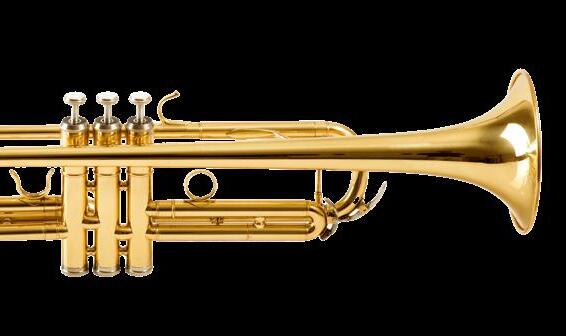

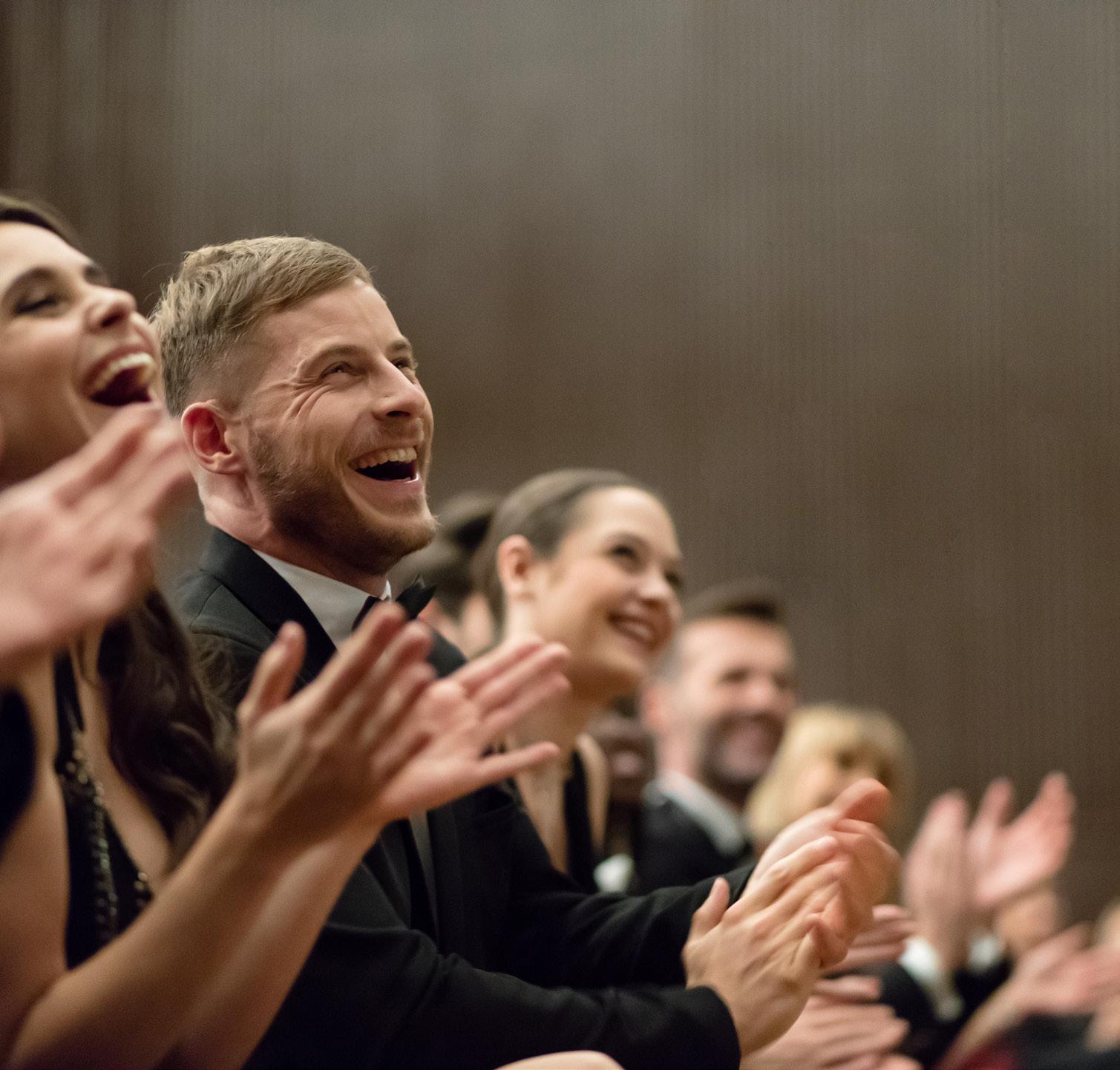

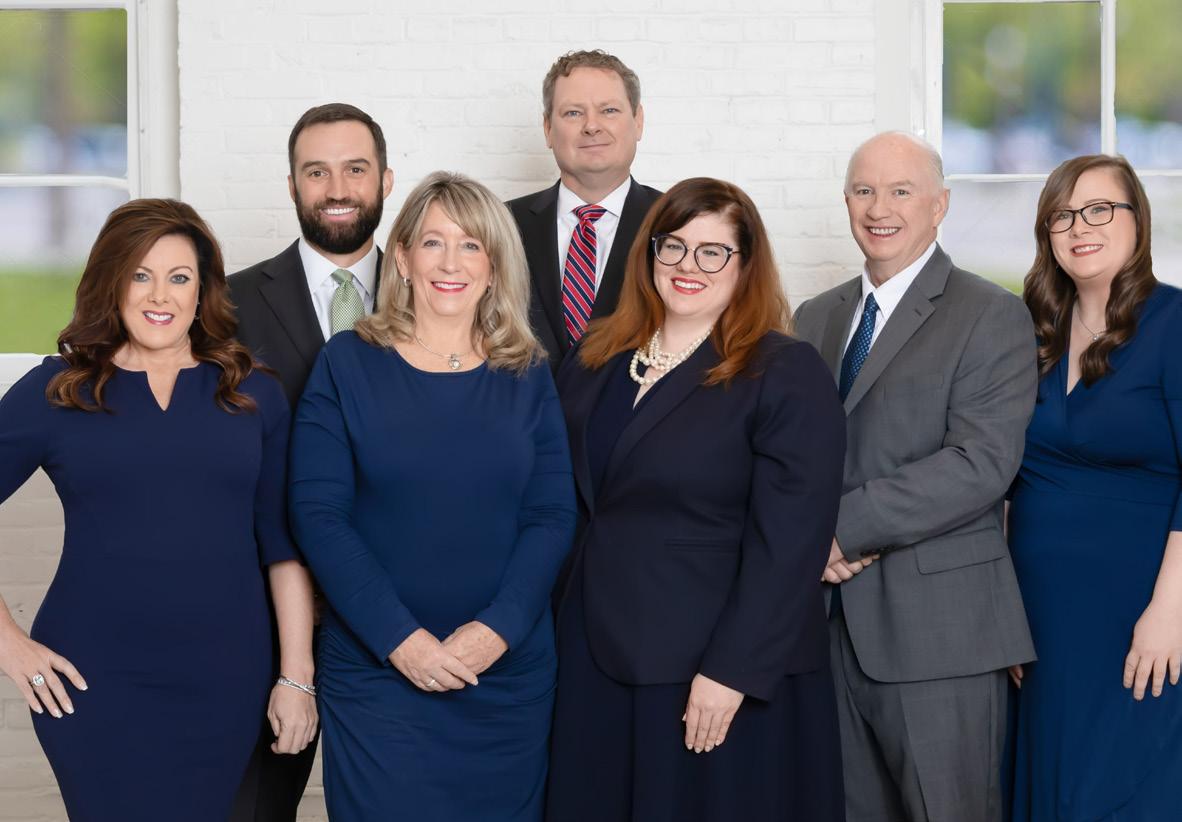
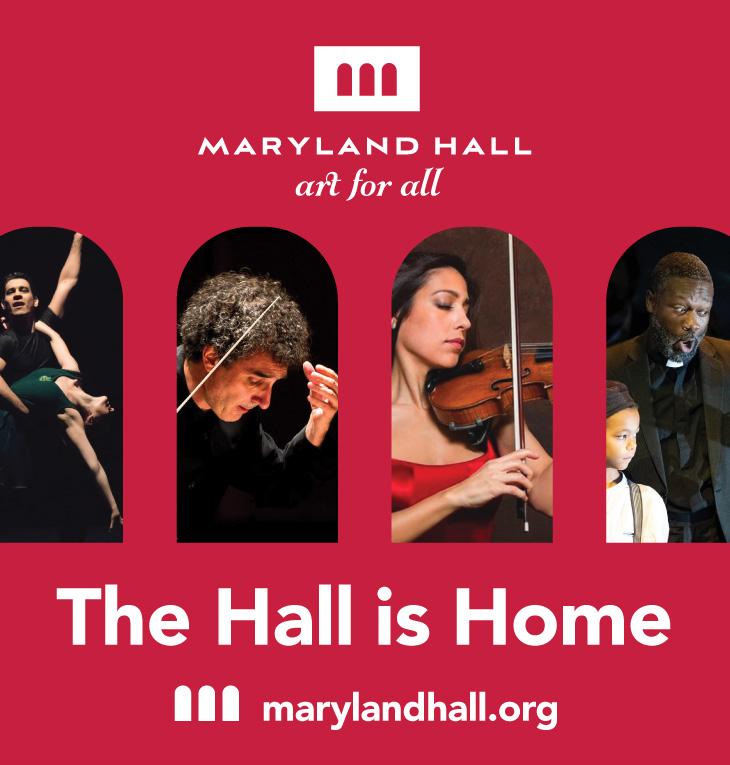
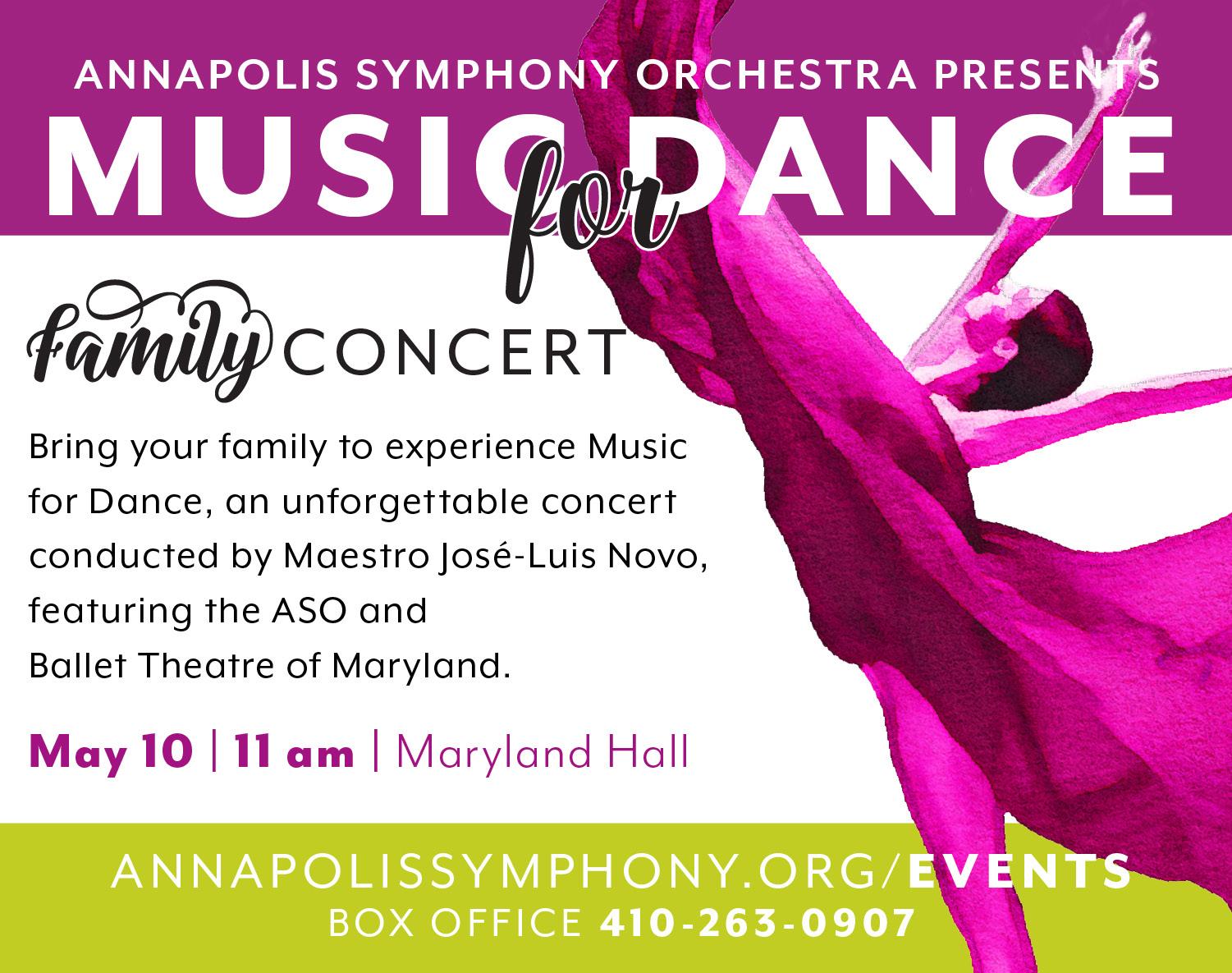
FASO is a dynamic group of music lovers who support the Annapolis Symphony Orchestra. FASO fundraising events include the Concert of Tastes, Historical Happy Hour, themed dinners, Dine-toDonate, Movie & Trivia Nights, wine tastings at local vineyards, international trips and much more. FASO collaborates with the Annapolis Symphony Academy to provide grants that expand programming and provide scholarships. FASO efforts expand beyond Annapolis. FASO recently sponsored the featurelength film Sing to Me Sylvie, which won the Spotlight Award from the Volunteer Council of the League of American Orchestras. Join us! Become part of the fun while helping to benefit the Annapolis Symphony Orchestra and rising artists. IT IS EASY TO JOIN - VISIT ANNAPOLIS SYMPHONY.ORG
Membership: $50 per person | $75 per couple Contact info: 410-267-3646 friends@annapolissymphony.org
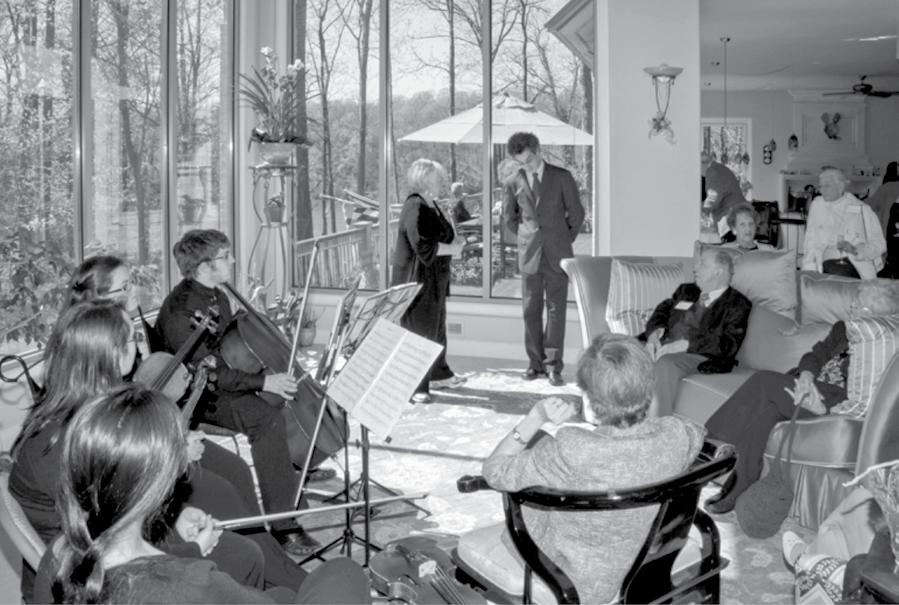
2024-2025 Board of Directors
Officers/Executive Committee:
Ann A. Tran, President
Marguerite Cole, Vice President
Ways & Means
Paula Abernethy, Vice President
Membership
Julie S. Grudzinskas, Treasurer
David Bush, Recording Secretary
Carol Richards, Corresponding Secretary
Directors:
Adele Baron
John Andryszak
Adele Baron
Jim Cheevers
Betsy Chotin
Kathy Clatanoff
Renee Ehler
Robert Foye
Elizabeth
Gordon-Bluntschli
Diane Green
Patrick Green
Anna E. Greenberg
Valerie Gutterson
Stephen Holt
Marilyn Lyons
Lynn Maichle
Mary McKiel
Rick Sullivan
The Friends of the Annapolis Symphony Orchestra is a 501(c)(3) organization. Dues and donations are tax deductible to the fullest extent of the law, providing no goods or services are realized by joining.
Use of cameras or recording devices during the performance is strictly prohibited.
Latecomers will only be seated at the conclusion of a musical selection.
Please note the nearest exit to your seat. In the event of fire or another emergency, WALK — do not run — to that exit.
In the event of severe weather, every effort will be made to continue with scheduled concerts. No refunds will be given if a concert is performed during severe weather but not attended by the ticket holder.
Maryland Hall is a smoke-free facility. Smoking is prohibited in and on the grounds of the building.
Enjoy a beer or glass of wine before the concert and at intermission in room 206. Cash and credit cards are accepted and drinks are allowed in the concert hall.
Subscribing to the Masterworks Series at the Annapolis Symphony Orchestra is the best deal around! As a subscriber you get exclusive access to a 20% discount on single tickets, priority seating, and free exchanges. Subscriptions are available for all 5 Masterworks concerts as a full series or 3 or 4 concerts as a Flex Pass. Learn more at annapolissymphony.org/subscribe.
Parking, ramp, and elevator facilities are available at the entrance nearest Spa Road. Wheelchair accessible seating is also available. Please call 410-263-0907 to make arrangements.
Whether it’s your first or fifth time at the Symphony, single tickets are always available for purchase! Tickets can be purchased online at annapolissymphony.org/events or by calling the Symphony Box Office at 410263-0907.
We are dedicated to making your group‘s visit to the Annapolis Symphony a memorable experience. With a group of 10 or more, receive a 15% discount on all tickets.
Subscribers may exchange their tickets for the alternate performance of the same concert only. Exchanges are subject to availability.
Subscribers may donate tickets back to the Symphony as a tax-deductible contribution. We will mail you an acknowledgement letter for your donation.
There are no refunds and all ticket sales are final. If there are changes to the program, ticket holders will be contacted with options.
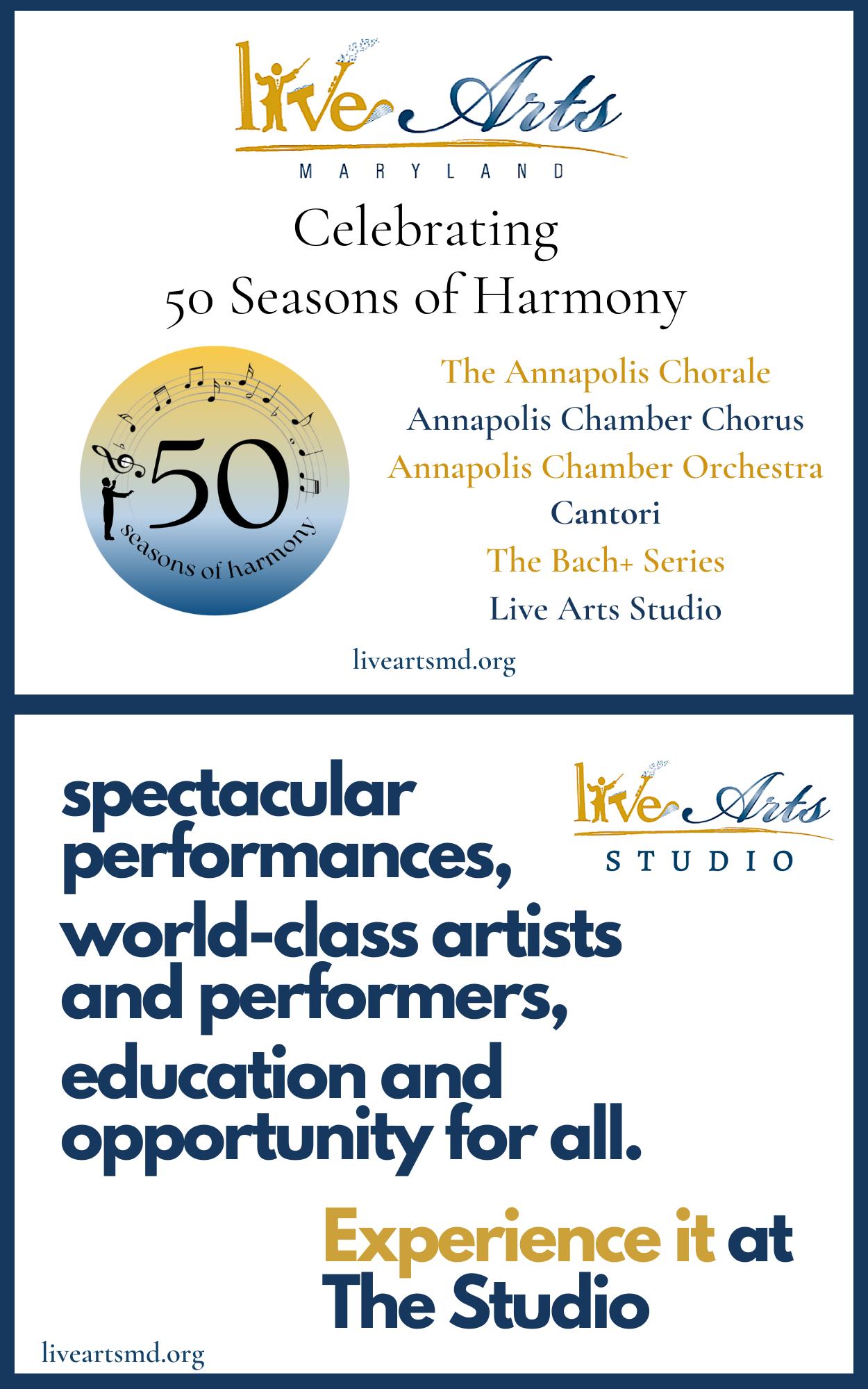
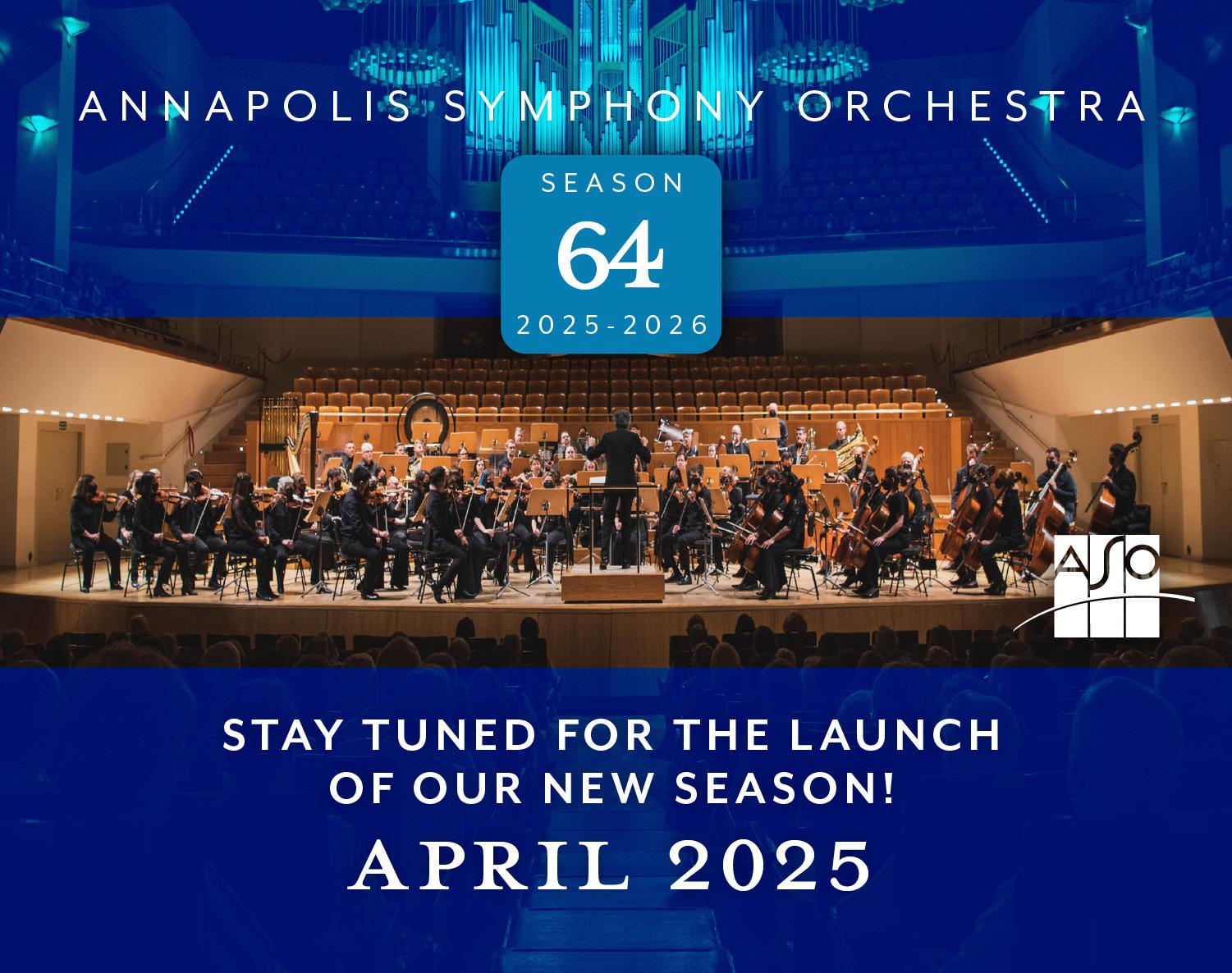
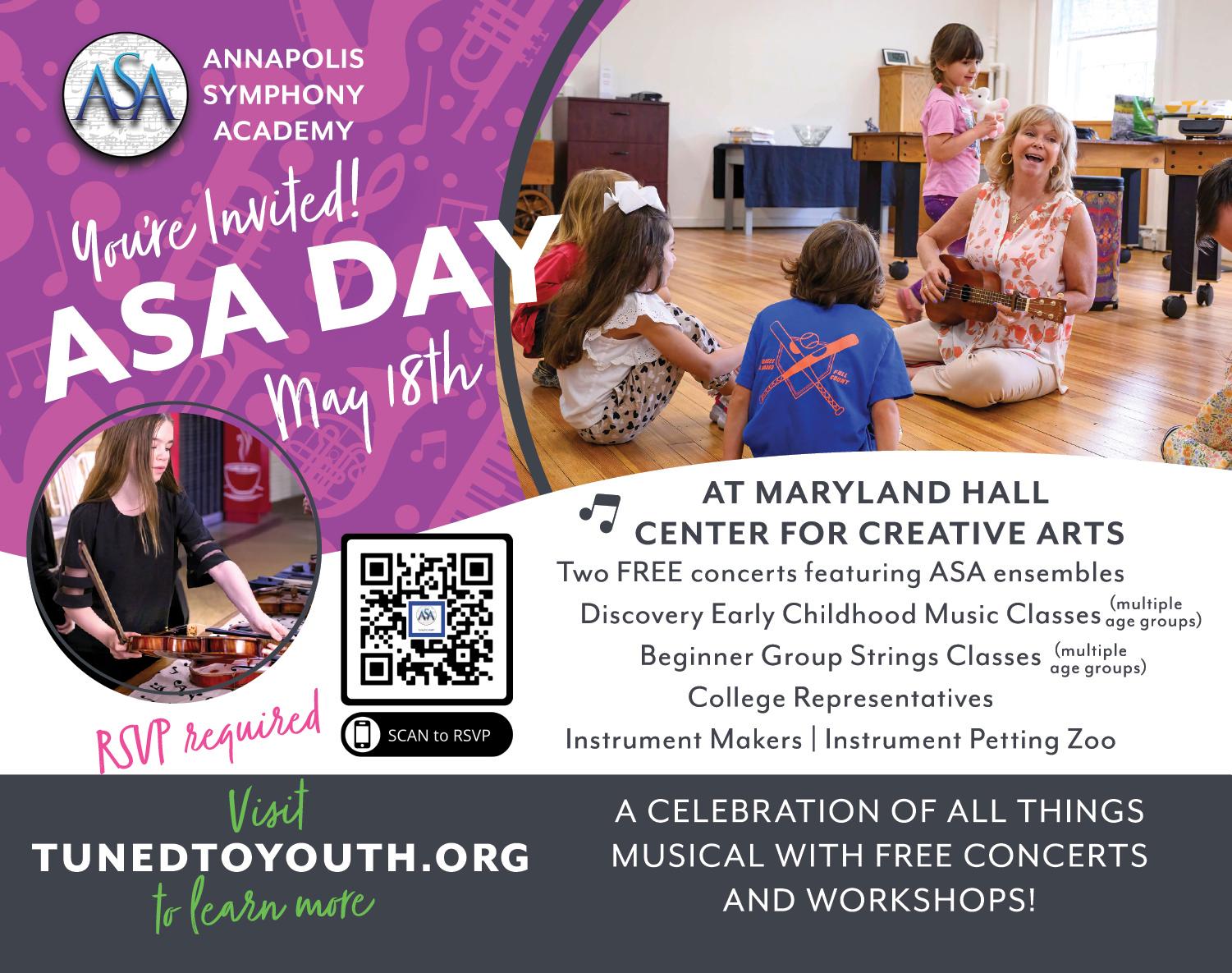

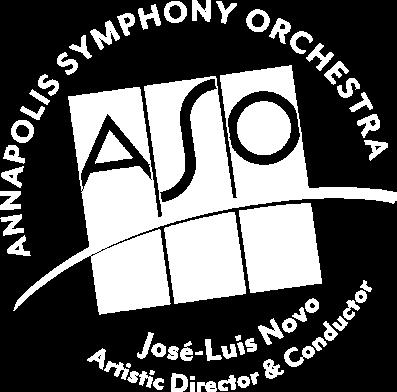
SYMPHONY . ORG